English"If you are determined to learn, no one can stop you." - Z. Ziglar The students began their English lessons with introspection on their online mode of learning, imagining the future, and associating it with their first literature text, "The Fun They Had." The plot of the story allowed them to draw parallels between online learning and on-campus learning. Following this, the students completed a small project where they created an opinionnaire on the latest apps and devices used in households and debated on the same. They were then introduced to another literary piece, "The Lost Child" by Mulk Raj Anand, where they discussed the importance of materialistic things versus unconditional love. They attempted to suggest their own endings to the story based on logical possibilities and their imagination. The students also shared their views on how they make choices, the consequences of those choices, and the reasons behind their actions. They provided personal examples to analyze the poem "The Road Not Taken." Higher Order Thinking Skills (HOTS) questions were used as an extension to help them anticipate their future course of actions and write about difficult choices. In the month of May, the class began with a discussion on unusual pets and whether any of the students had ever owned one. Following the discussion, they read a captivating story about a mischievous pet named TOTO. The lesson started earlier and concluded with an understanding of how stories can be written. The students then created comic strips in their notebooks, weaving their own stories. As an integrated activity with the poem 'The Road not Taken', the format of a "Diary Entry" was shared. In the grammar lessons, the students practiced various sub-topics such as gap filling, sentence reordering, omission, and editing. The students were introduced to the chapter "The Sound of Music," which included the biographies of Evelyn Glennie and Bismillah Khan. They watched a short biographical video on Evelyn Glennie to gain a deeper understanding. Through this chapter, the students learned life skills and human values such as respect, support, and understanding towards people with special needs. BiologyA reflection activity was conducted in which students were asked to observe a picture and discuss their views. Through this activity, students learned that we often overlook things in our lives and fail to express gratitude for them. Expressing gratitude and cultivating it within ourselves was highlighted as crucial for our physical and mental well-being, higher self-esteem, and overall happiness. Chapter: Fundamental Unit of Life The students' prior knowledge about the topic of cells was assessed through a testing activity. The discovery of cells and the invention of the microscope were discussed, along with a timeline of the efforts made by scientists in the field of cell discovery. This was presented through a TED-Ed video tutorial. An integrated activity involving a Venn diagram, connecting with the concept of mathematics, was conducted to compare and contrast prokaryotic and eukaryotic cells. "Success is the sum of small efforts, repeated." With this quote in mind, students began the month of May. A lot of preparation and recapitulation went into the unit test. Students performed a practical laboratory activity in which they prepared a temporary stained mount of an onion peel and observed it under the microscope. Through this hands-on activity, students inferred the structure of a plant cell. The structure of the cell membrane and cell wall was discussed and reinforced using a video (https://youtu.be/qBCVVszQQNs ). Students were excited to construct the cell membrane using an online tool: https://www.wisc-online.com/learn/natural-science/life-science/ap1101/construction-of-the-cell-membrane. The concept of osmosis and diffusion was illustrated through another demonstrative activity. PhysicsMOTION The students' prior knowledge about the topic ‘Motion and Rest' was assessed through a group discussion. The concept of reference point was introduced by a role play. Students have practiced to calculate distance and displacement. The concept of average velocity and speed was explained and students understood and practised to find average velocity and speed. Students engaged themselves to learn the concept of instantaneous velocity and understood the difference between uniform and non-uniform motion. Students discussed the application of an accelerator and brakes in the vehicle and understood the concept of acceleration and retardation. Equations of uniform accelerated motion were explained and students practised the use of the formula to find different physical quantities like final velocity, displacement, acceleration, etc. In May, the students were explained about the Graph and its components. They understood the meaning and use of slope and area under graph. They practised to plot the graph on the basis of given information. ChemistryMatter In Our Surroundings The learners were engaged in a lot of interesting experiments throughout the chapter. They explored different properties of particles of matter through hands-on activities. For example, they dissolved sugar and salt in water to understand that these substances occupy the spaces present between the particles of water. They concluded that particles of matter have spaces between them. Furthermore, they dissolved potassium permanganate in water and observed the dilution process, which led them to the conclusion that matter is made up of millions of small particles. To investigate the effect of temperature on the rate of diffusion, they dissolved sugar and blue ink in hot and cold water and observed that the rate of diffusion increases with temperature. A small worksheet on the topic of "Characteristics of Particles of Matter" was designed for them to track their progress. In addition, Powerpoint presentation and listening and summarizing activities on evaporation and factors affecting it were incorporated. During these activities, students summarized the facts in their notebooks while understanding and later presented their findings in class, thereby enhancing their listening and presentation skills. Assessments were held to augment students' engagement and ensure continuous improvement by providing relevant information about comprehension throughout the learning process. An end review assessment on the topic "Matter In Our Surroundings" was also designed to track their progress. Introduction of "Is matter around us pure?" through a hands on activity on true solution, suspension and colloids was done. Students penned down the differences between solution, suspension and colloids. Geography“Everything has to do with geography” ~ Judy Martz Chapter 1: India: Size and Location The classroom session commenced with an interactive icebreaker activity, prompting students to list their top five national prides, fostering a sense of connection and pride in their country. Following this, a series of review questions guided students through fundamental geographical aspects of India, from identifying its continent to delineating neighboring countries. Through hands-on activities, students traced lines of latitude and longitude on a globe, gaining a tactile understanding of geographical concepts. Transitioning, maps were used to illustrate India's east-west and north-south extent, allowing students to identify longitudinal and latitudinal boundaries. A board-mounted map of India served as a canvas for pinpointing various features, such as states intersecting the Tropic of Cancer and provinces bordering neighboring countries. The session progressed to explore time calculation using the Standard Meridian (IST), enlightening students about time zones and the rationale behind India's adoption of IST. Encouraged to calculate corresponding times for India's eastern and western longitudes, students grasped the necessity for standardized timekeeping systems, linking geographical positioning with practical implications. Delving beyond geographical concepts, discussions explored the historical and geopolitical implications of India's size. Students examined India's neighboring countries and the significance of historical trade routes like the Silk Route. By contextualizing India's size within historical narratives and contemporary foreign policy, students gained a holistic understanding of its geopolitical significance. Chapter 2: Physical features of India Transitioning seamlessly, the classroom dynamic shifted to an engaging introduction utilizing a jigsaw puzzle-based explanation of plate tectonics. Complemented by a visually stimulating video on continental drift and plate tectonics, students embarked on a captivating exploration of the Earth's physiographic divisions. Building upon this foundation, students examined India's geographical characteristics, focusing on the Himalayan region. Utilizing Natgeo Mapmaker, students delved into the divisions of the Himalayas, from the Punjab Himalaya to the Assam Himalaya, fostering a nuanced understanding of India's diverse topography. The students also practised several HOTS Questions, Competency-based Questions, Reasoning Based Questions and MCQs based on the concepts to assess their learning for UT-I. Economics“In the end we retain from our studies only that which we practically apply.” -- Johann Wolfgang Von The narrative of Palampur commenced with an exploration of rural landscapes and the lifestyle of village dwellers, emphasizing their means of sustenance and the prevalent caste and class divisions within the community. It was observed that land ownership is limited, and those without land typically belong to the category of landless farmers. In our classroom sessions, we supplemented our understanding with relevant videos, shedding light on various aspects of village life. Furthermore, engaging in class discussions, we delved into the multifaceted challenges and daily struggles encountered by the inhabitants of Palampur. Civics“Develop a passion for learning. If you do, you will never cease to grow.” -- Anthony J. D’Angelo What is democracy why democracy? The term "democracy" may appear straightforward, yet its complexities unfold when we delve into its various dimensions. To embark on the journey of comprehending the essence and significance of democracy, we initiated the lesson by organizing an election for the class monitor. Learning the governance of other countries:- Throughout the course, we delved into the democratic transitions in countries like Pakistan, Zimbabwe, and Mexico. The students displayed a keen interest in exploring the diverse facets of democracy across different nations, as well as the challenges and triumphs associated with its evolution. History“One learns from books and example only that certain things can be done. Actual learning requires that you do those things.” — Frank Herbert In the pursuit of understanding history, it becomes imperative to engage one's imagination, for history today holds significance when infused with imaginative narratives. Recently, we delved into the study of the French Revolution during the month of May, endeavouring to draw connections between this pivotal moment in history and India's complex socio-political landscape, particularly regarding caste and class segregation. Dilectical method:- Rather than viewing the French Revolution in isolation, we explored its resonance within the Indian context, recognizing it as a beacon that illuminated concepts of Equality, Fraternity, and Justice that eventually found their way to India through a protracted struggle. Witnessing the students' keen interest as they discerned parallels between textbook knowledge and real-world scenarios was immensely rewarding. For both the students and myself, this exploration of the French Revolution proved to be an enriching experience, marked by fresh perspectives and renewed enthusiasm. Important terms:- In addition, we incorporated relevant videos and delved into concepts such as the "social contract," "separation of powers", "revolution", and "republicanism". Engaging in extensive classroom discussions, students explored the significance and applicability of the French Revolution to contemporary society. These discussions allowed for a deeper understanding of how principles such as social contracts and the establishment of republics resonate in today's world. MathCoordinate Geometry: The students' prior knowledge of coordinate geometry and related terms such as axis, origin, abscissa, and ordinate was assessed. Linear equation in two variables: The session started by reviewing linear equations, variables, and solving linear equations. The concept of linear equations in two variables was explained, and the students enjoyed understanding the process of forming and solving such equations. Heron's Formula: The students' understanding of the area of a triangle and related terms like sides, base, and height was assessed using a Geoboard and rubber bands. Through practice, the students grasped the concept of Heron's Formula and its application in finding the area of a triangle. Lines and Angles: The class embarked on a comprehensive journey through the realm of "Lines and Angles." To assess their pre-existing knowledge, the students engaged with Geogebra Geometry Software, effectively applying it to understand Types of Angles, Pair of Angles, and Adjacent Angles. With consistent practice, the class delved into concepts like Vertically Opposite Angles and the Properties of Parallel Lines. The practical applications of these concepts were also explored. An intriguing integration was made with Information and Communication Technology (ICT) through the introduction of Geogebra geometry software. This software was utilized to illustrate and comprehend Vertically Opposite Angles and the Properties of Parallel Lines. The engagement with this software heightened the students' understanding and allowed them to construct and analyze shapes, unveiling unknown angles within them. Further exploration involved the study of various aspects, such as: Properties of Adjacent Angles and Linear Pairs Interactions between Parallel Lines and a Transversal Line, Line Parallel to Itself Revision of UT1 The students were asked to prepare for UT I. UT I syllabus was revised properly with the help of a revision worksheet which was shared through "Teams". The common errors were pointed out in the class, and students were made to observe and correct their mistakes. Hindiस्पर्श पाठ्य पुस्तक के पाठ 'दुःख का अधिकार' को पढ़ाते हुए उसे कराने का उद्देश्य स्पष्ट किया गया | पाठ को इतिहास विषय के साथ एकीकृत करते हुए नुक्कड़ नाटक कराया गया | पोशाक का महत्त्व और दुख मनाने का भी अधिकार होता है - इससे छात्र परिचित हुए | रैदास जी का परिचय देते हुए उनके पद कराए गए और छात्रों को यह बताया गया कि किस तरह से रैदास के प्रभु उनके जैसे निम्न जाति के लोगों पर अपनी विशेष कृपा रखते हैं और उनके माथे पर अपना भक्ति रुपी मुकुट पहनाते हैं | बहुमुखी प्रतिभा के अंतर्गत संगीत से एकीकृत करते हुए छात्रों से पदों का सस्वर वाचन कराया गया | जीव जंतुओं के प्रति दया के भाव दिखाते हुए पूरक पुस्तिका के पाठ 'गिल्लू' का वाचन कराया गया | जीव - जंतुओं में भी मानवीय संवेदनाएँ होती हैं और वे भी इंसानों जैसा ध्यान रख सकते हैं - इस सबके बारें में बताते हुए सतत विकास लक्ष्य -१० जलीय जीवों की सुरक्षा से संबंधित गतिविधि कार्य पत्रिका में दी गई | इस विषय पर छात्रों से कक्षा में वार्तालाप किया गया | व्याकरणिक विषय वर्ण विचार कराते हुए अनुस्वार और अनुनासिक कराए गए | शब्दों में किस स्थान पर अनुस्वार का प्रयोग किया जाता है और किस स्थान पर अनुनासिक का - छात्र इससे परिचित कराया गया | पंचम वर्ण के बारें में बताया गया | उपसर्ग और प्रत्यय की परिभाषा देते हुए उनका शब्दों में प्रयोग और उपसर्ग - प्रत्यय युक्त शब्दों में से उन्हें अलग करना बताया गया | व्याकरणिक विषयों के द्वारा छात्रों के शब्द भंडार में वृद्धि हुई | रचनात्मक लेखन के विषय - अनुच्छेद लेखन का मौखिक और लिखित अभ्यास कराया गया | इकाई परीक्षा -१ की मौखिक और लिखित परीक्षा ली गई | छात्रों की शंकाओं का समाधान किया गया | रहीम जी का परिचय देते हुए उनके द्वारा रचित दोहों का अर्थ और उनके प्रत्येक दोहे से मिलने वाली सीख से परिचित कराया गया | उन्हें कराने का उद्देश्य स्पष्ट करते हुए दोहों की विस्तृत व्याख्या कराई गई | दोहों के आधार पर अन्य महत्त्वपूर्ण प्रश्न कराए गए | FrenchAs we wrap up the months of April and May, it's a wonderful opportunity to reflect on the diverse and enriching topics we covered. These months were pivotal in preparing students for their UT 1 syllabus.We began our sessions by establishing essential agreements within the classroom. Once these agreements were in place, we dove into our lessons with an engaging activity: "se présenter." Students introduced themselves using vocabulary, adjectives, articles, and tenses they had previously learned. In addition to self-presentations, students were taught how to create an identity card in French. This exercise was practical and fun, allowing students to apply their language skills in a tangible way. We also revisited numbers, through an activity focused on reading telephone numbers in French. The first and second lessons of our sessions were dedicated to a thorough recap of essential grammar topics. We covered contracted articles, definite and indefinite articles, prepositions, past tense, and possessive adjectives. Additionally, they learned how to describe a person using provided images, which helped them practice applying their grammar knowledge in context. Students were taught how to write messages. We focused on three key points: sending an invitation, accepting an invitation, and refusing an invitation. This exercise was incredibly valuable in helping students develop their communication skills. They learned how to convey their thoughts clearly and appropriately in different social situations.To reinforce the topics covered in class, we utilized both the textbook and workbook. These exercises provided students with additional practice and helped solidify their understanding of the material. The culmination of our efforts was evident in the UT 1 results. Students performed well. We also held the first Parent-Teacher Meeting (PTM) for the new session. It was a productive and positive meeting, where we discussed students' progress and addressed any concerns. Spanish The month of April began with a revision of general concepts such as personal pronouns, articles, verbs conjugation, greetings, farewells, etc. The life and work of authors like Miguel de Cervantes and Benito Perez Galdos were introduced as an important part of the CBSE content. Students watched an animated video on “Don Quijote de la Mancha” and discussed the story and characters of the same. As part of culture and civilization, students recalled the Spanish speaking countries and their capitals. With the help of the book Aula 1, the class dived through blogs and articles related to Latin-American geography and culture. A PPT presentation helped to discover interesting facts about Spanish culture. Grammar topics such as adverbs, interrogatives and superlatives were discussed followed by exercises from the workbook Repaso 1. Students learnt how to describe a picture using the impersonal form of the verb haber “hay” and gerunds. GermanIn April, the Chapter “Allein zu Hause” was taught. The topics students studied were based on the SDG 12: Responsible Consumption and Production. Students learnt the vocabulary relating to the theme of organising a Party . They learnt to describe themselves through Profile creation. A reading exercise on a “Flashmob” was carried out. Grammar of conjunctions of “wenn” was taught with exercises from Get Ready Exercise Book. In the following month of May, students practised grammar exercises through Get Ready Exercise Book. Revision was carried out for Unit Test 1. E- Mail Reading and writing was discussed. Students learnt how to plan a party and send out an invitataion for the same. After the completion of the chapter, they are capable of holding a conversation on themes around celebration. Sanskritसंस्कृत – अव्ययशब्द और शब्दकोश में वृद्धि करते हुए हलंत शब्दरुपाणि - सकारान्त , तकारान्त , नकारान्त, अजंत शब्दरुपाणि - अकारान्त , आकारान्त, इकारान्त , ईकारान्त , उकारान्त ऋकारान्त - मातृ – पितृ , धातुरुपाणि – गम् , नम् , कृ, भू अस् , नी , दृश् , नृत् , स्था , दा , पा का लिखित और अनुप्रयोगात्मक अभ्यास कराया गया । तालिका द्वारा परसर्ग व वाक्यनिर्माण के साथ अभ्यास कराते हुए कारक-विभक्ति – उपपद विभक्ति और अव्ययशब्दों का सम्यक ज्ञान प्रदान कर पदपरिचय में निपुणता प्रदान की गई। अंतर्विषयक- ( संगीत- कला और साहित्य) से समायोजित करते हुए पाठ १– अविवेक: परमापदाम्’ के माध्यम से गद्यांशावबोधन कराया गया । पाठ २ – पाथेयम्' के माध्यम से काव्यांशावबोधन कराया गया । विद्या, बुद्धि , परिश्रम, उत्तम धन , समझ और नीति पर आधारित कठिन परिस्थितियों का सामना कर जीवन के लिए प्रेरणाप्रद प्रस्तुत श्लोकों से सामंजस्यीकरण करते हुए छात्रों से चर्चा की गई । पाठ ३ –विजयतां स्वदेश:’ के माध्यम से संवादाशावबोधन , गद्यांशावबोधन और पद्यांशावबोधन कराया गया । साहित्यिक कल्पनाशीलता और सृजनात्मकता की योग्यता का विकास का मौलिक भाषा संबंधी ज्ञान प्रदान किया गया। ITThe session commenced with Ch:7-Introduction to ICT followed by Ch:8-Components of Computer System, Ch:11-Operating systems, Ch:12- Introduction to Internet which helped learners understand the concept of network protocols and their role in data communication, explain the structure of a Uniform Resource Locator (URL) and its significance in web addressing, analyze the features and functionalities of popular social media platforms (e.g., Facebook, Twitter, LinkedIn), explore the implications of social media in communication, marketing, and information dissemination,dDifferentiate between primary memory (RAM) and secondary storage (hard drives, SSDs) and xplore the role of cache memory in enhancing computer performance. Students, in pairs, presented their findings on Input Devices, O/P devices, Storage devices, Merits and Demerits of various social media, the role of You tube, Facebook, Bolg etc. Students also made mind maps in the lab on Role of ICT. Unit II was introduced to learners post UT1 cycle, all classes were held in the lab where they used Libre office word processor and explored the various features. AIIn April, we explored Artificial Intelligence (AI) with fun activities: AI Scavenger Hunt: Found AI in daily life, like voice assistants and recommendation systems. AI-Generated Images: Used tools like DALL-E to spot AI-made images, showing AI's creative abilities and limits. AI Artwork - Ubuntu: Created AI art celebrating diversity and unity, inspired by the African philosophy of interconnectedness. AI Games: Learned about AI through games: Rock, Paper, Scissors for language processing, Quick Draw for image recognition, and Mystery Animal for data usage. In May, students started learning Python programming: Python IDLE: Explored software and its script and shell modes. Core Concepts: Learned about variables, keywords, literals, and data types. Hands-On Practice: Applied knowledge through practical exercises, combining theory and practice to build a strong foundation in Python programming. Physical EducationBadminton: Outdoor Practice: Practicing footwork and movements without a shuttlecock, wall hitting, shuttle juggling, and knocking with partners. Gymnastics: Terminology terms like vault, beam, floor exercise, uneven bars, and pommel horse were discussed, which are apparatuses used in gymnastics. Judo: Osotogari (the technique for throwing) all fall; Ushiro Ukemi; Mae Ukemi; and Yuko Ukemi. Cricket: Basics of Cricket- Understanding the objectives and equipment used in the game of cricket, including bats, balls, and wickets. Friendly matches among students. Basketball: Dribbling: Learning to control and move the basketball using right-hand and left-hand dribbles. Defensive rebounding and passing while on the move. Football: friendly matches among students. Shooting (Grade 5 and Above): Holding dumbbells with one hand, body balance exercises related to balance, i.e., planks, squats, front planks, side planks, and one leg balance. Live fire with pellets and target paper. Indian Musicअप्रैल - मई माह में छात्र छात्राओं द्वारा की गई गतिविधिया: गायन अभ्यास: शुद्ध स्वर अलंकार । राग,गीत - लोक गीत माएरी । प्रयोग हुए वाद्य: तानपूरा, ऑडियो ट्रैक । गायन तकनीक: गायन के अभ्यास की बुनियादी तकनीक, प्रतियोगिता में प्रस्तुति के महत्वपूर्ण बिंदु इंवेस्टीचर कार्यक्रम मे चयनित छात्र छात्रों ने राग केदार मे कृष्णा गीत का प्रदर्शन किया वाद्य - कांगो , बोंगो एवं तबला का प्रारंभिक परिचय , हस्तमुद्रा (तीन ताल ) एवं भजनी ठेका Western MusicSong-"Fight Song" and "Sleeping Child" by MLTR. Students will be able to learn pitch skipping, tonality, and singing in unison, individually, or in groups.Learning the time signature,arpeggious along with the melody and different chord changes Instruments used:guitar,piano,drums and congo. Western DanceIn their Western Dance lessons with Shree Ram, the students learnt: 1. The dance form: Contemporary 2. A brief overview of the process of creation in contemporary dance by using tools of improvisation like directions, levels (0,1&2) and source of the movement technique. 3. Techniques of Contemporary Dance such as Bum roll, Swishes and Stomach Roll. 4. Creation Technique (Construction and De-construction) – A dance routine was taught in the class and using this technique students had to break the pattern of the given sequence and then had to reconstruct any possible permutation and combination. DramaWe commenced our new session with an energetic icebreaker, igniting excitement right from the start. This month, our focus areas included: • Concentration Exercises: Progressing from basic to intricate commands to enhance listening and task-following skills. • Focus-Boosting Activities: Engaging games like "Focus Counting" and "Frog in the Pond" to refine alertness and spatial awareness. • Surroundings Awareness: Highlighting the significance of being observant both on and off the stage. • "View Outside My Window" Activity: A creative exercise aimed at boosting imagination by describing and envisioning different scenes outside a window. In May, students explored the importance of observation through various games and activities, discovering how it benefits both theater performance and everyday life. Activities like the Mirror activity and "What Are You Doing?" helped them grasp the concept of observation. During improvisations, they drew upon their observations to create and perform scenes or on-the-spot improvisations. Indian DanceIn their Indian Dance lessons, the students learnt: The power of Deva Shree Ganesha, destroy all your sorrows, enhance your happiness, and create goodness all around you. Lord Ganesha bless you with worldly bounties. Keep you protected from obstacles at all times, with this thought we at Suncity started the new session with a beautiful Ganesh Vandana. Students learnt beautiful postures, mudras and body balancing along with Kathak basics- Tatkaar, Hastak, Shringar ras and body movements. Song: Hey Ganraya Dance style: Kathak Life SkillsIn April, our students engaged in the "Me, Myself, and I" journey. They defined their personas, wrote open letters to their future selves, and chose their community projects. These activities fostered a deep understanding of their identities and aspirations. In May, the focus shifted to "Playing the Role of Me in the Real World." Students explored social norms, societal labels, prejudice, discrimination, cultural bullying, privilege, and biases. Through discussions and activities, they learned to navigate these complex issues with empathy and awareness. April and May have been pivotal in helping our students grow into self-aware and socially conscious individuals. Visual ArtsStudents were introduced to the Kalighat painting from west bengal. Discussion on style of painting. Children learn to create human form in kalighat artform by using elements and principles of art.
0 Comments
MATHEMATICSMathematics is the music of reason, played out through numbers and equations. Revision is the practice that turns cacophony into symphony' The revision process was dynamic, employing sample papers and thorough revision sheets. Students carefully dissected key concepts from each chapter, encouraging in-depth understanding among students. Addressing doubts promptly created a supportive atmosphere, nurturing academic success. ENGLISH |
Class TeacherMr.Giggashu Punia IX-A Archives
May 2024
Categories |






























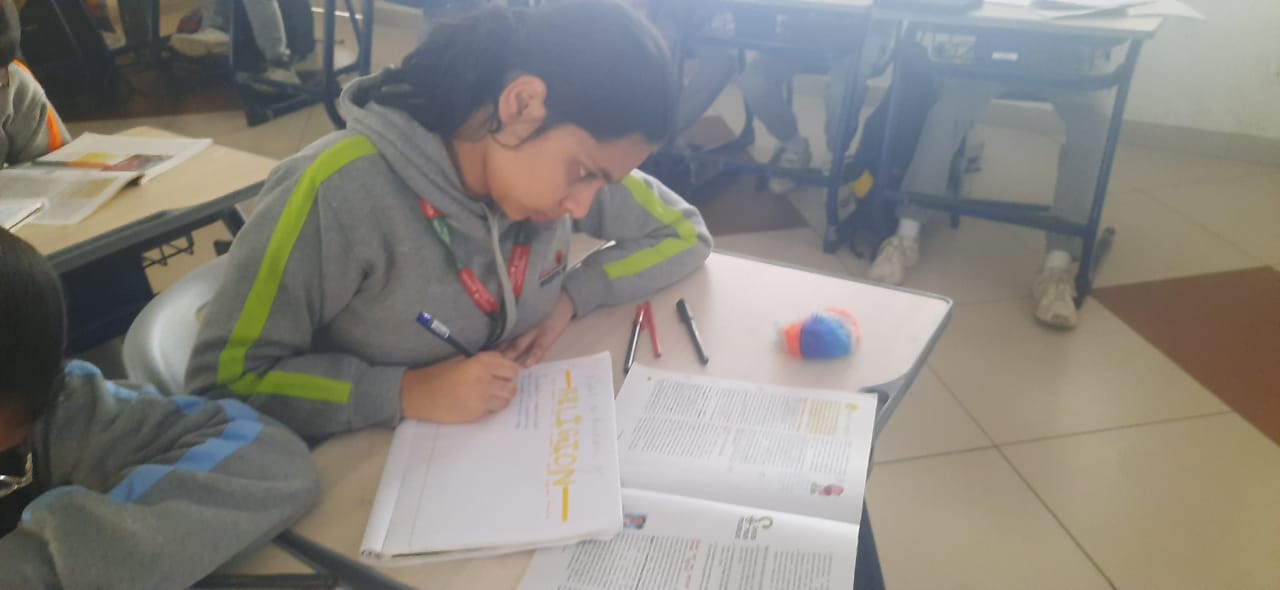
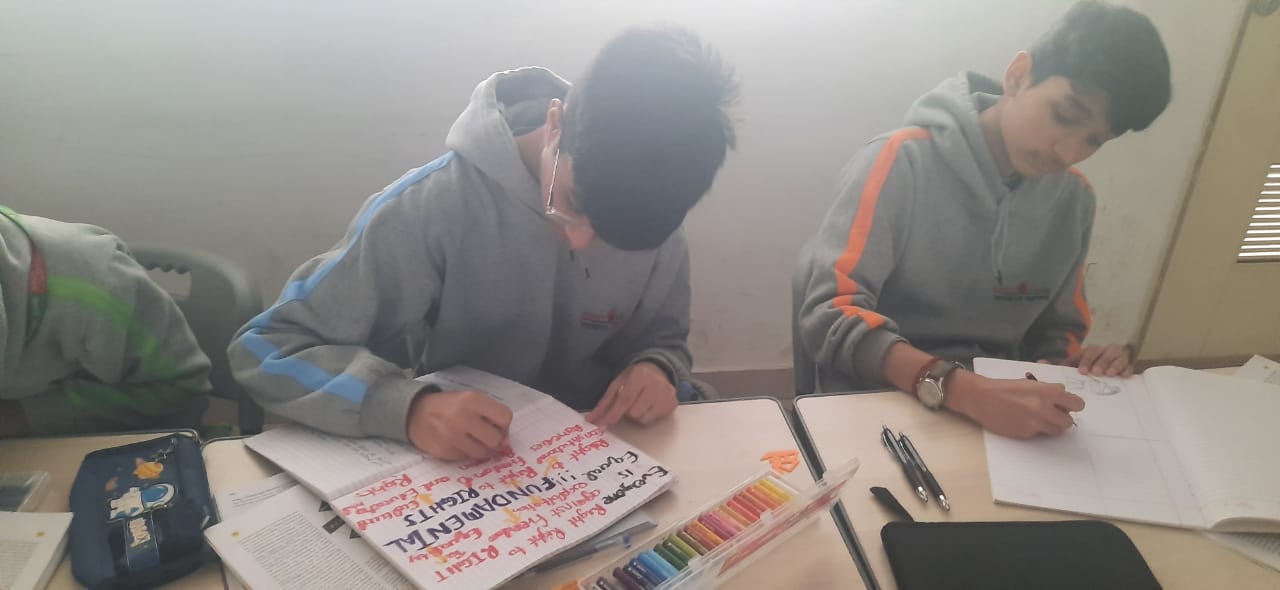
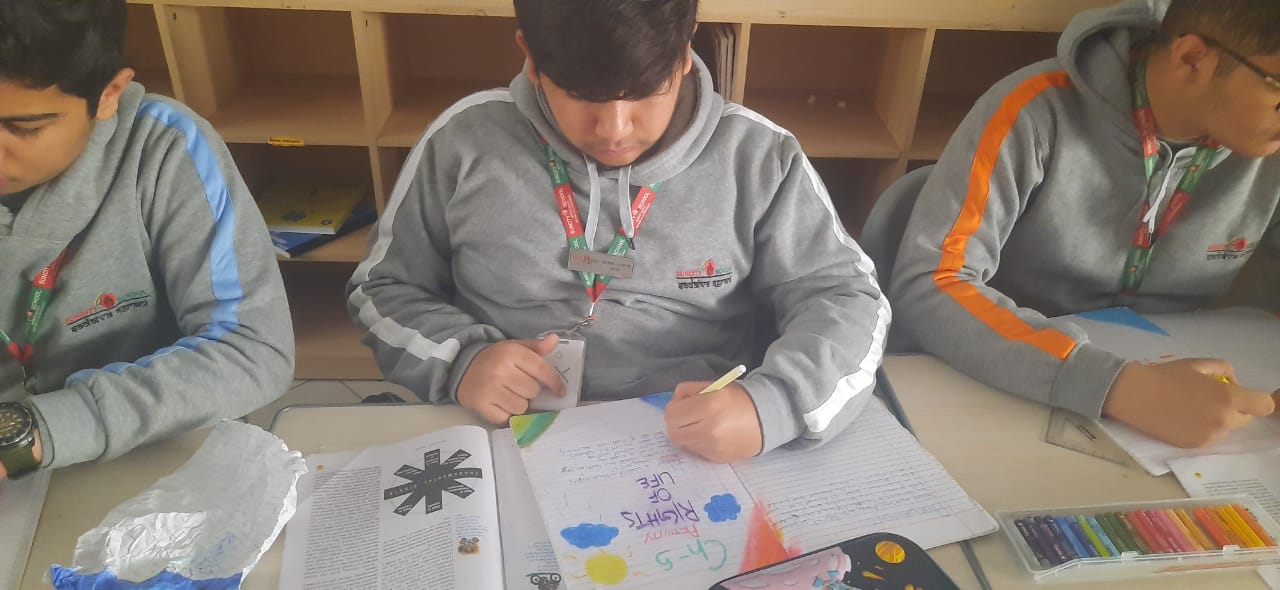
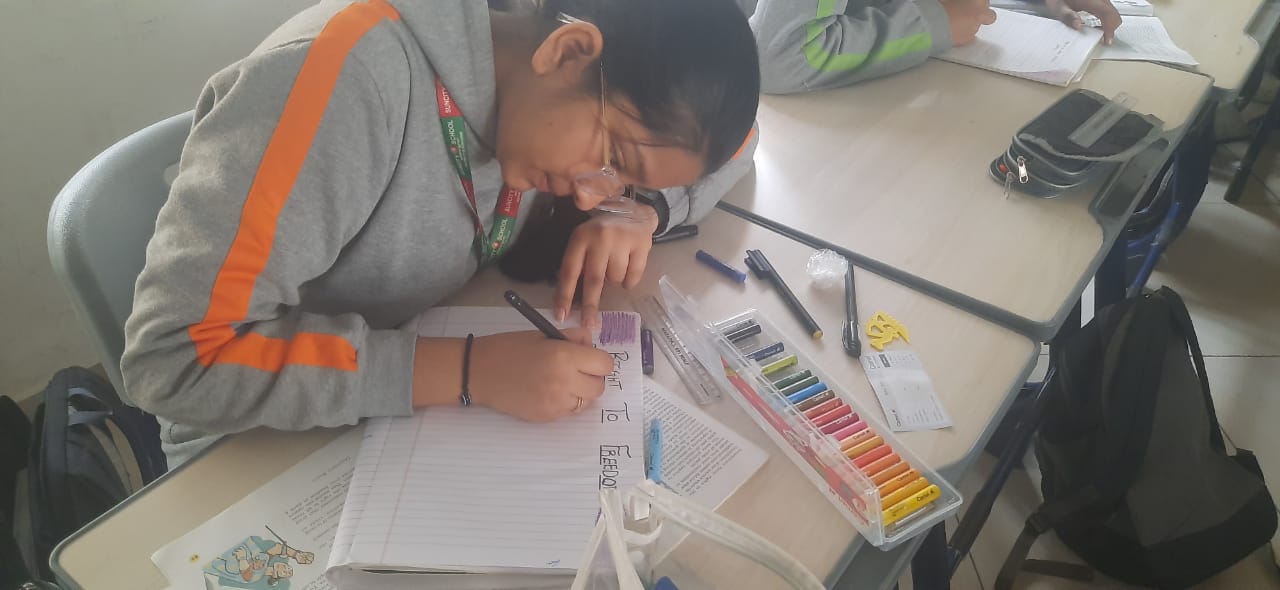
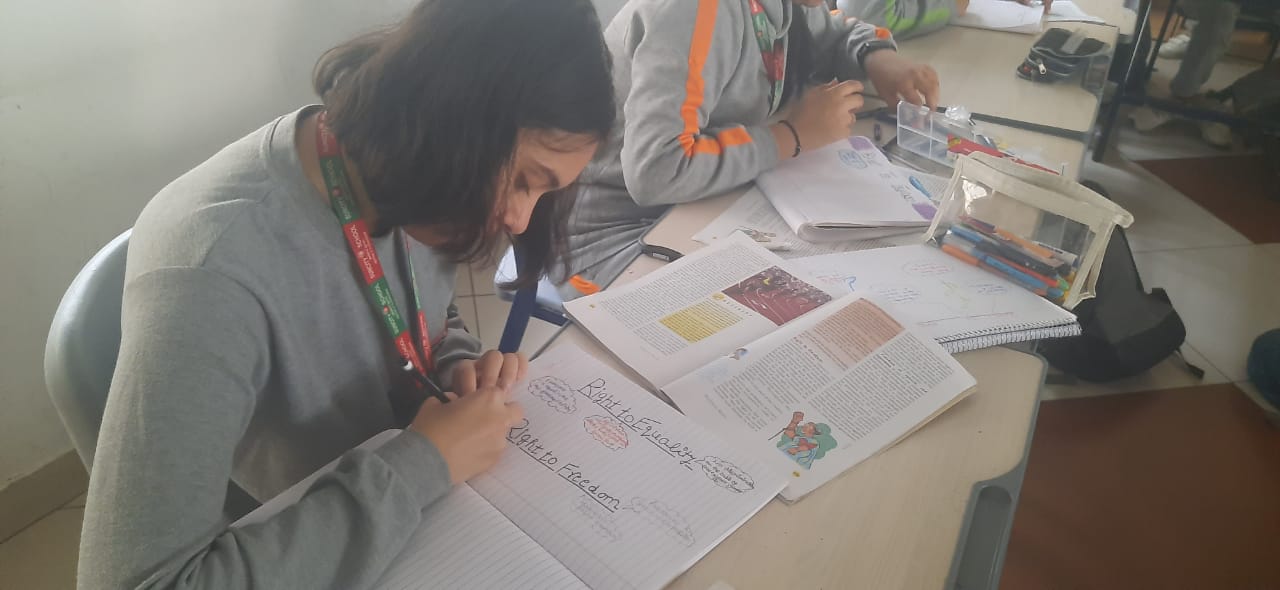
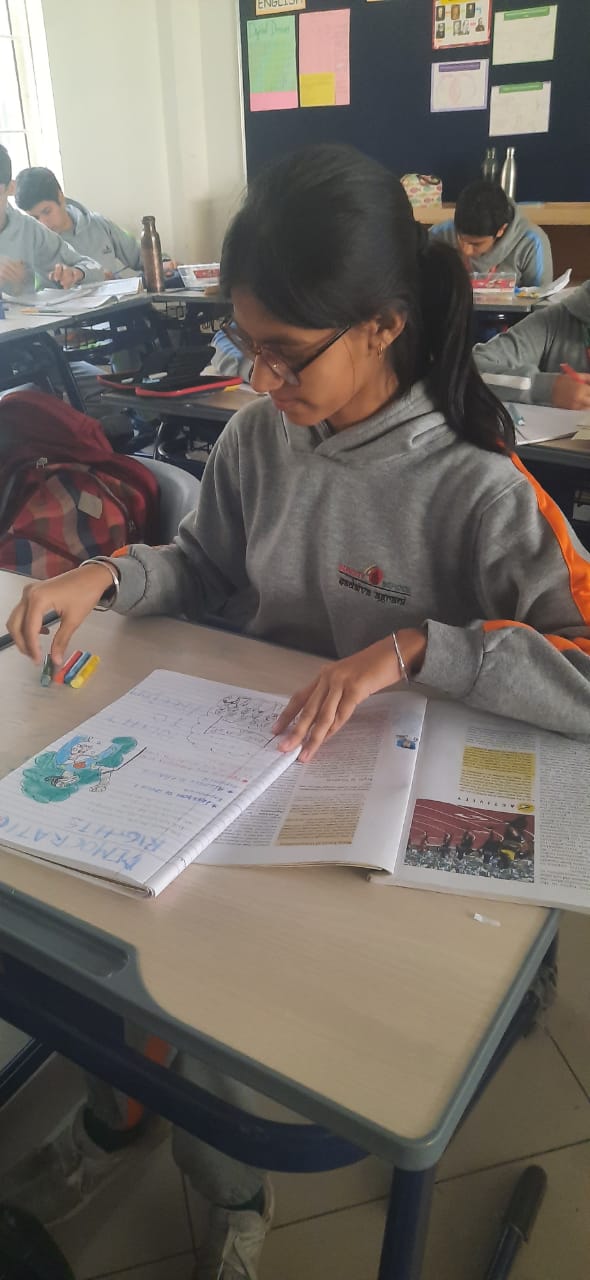
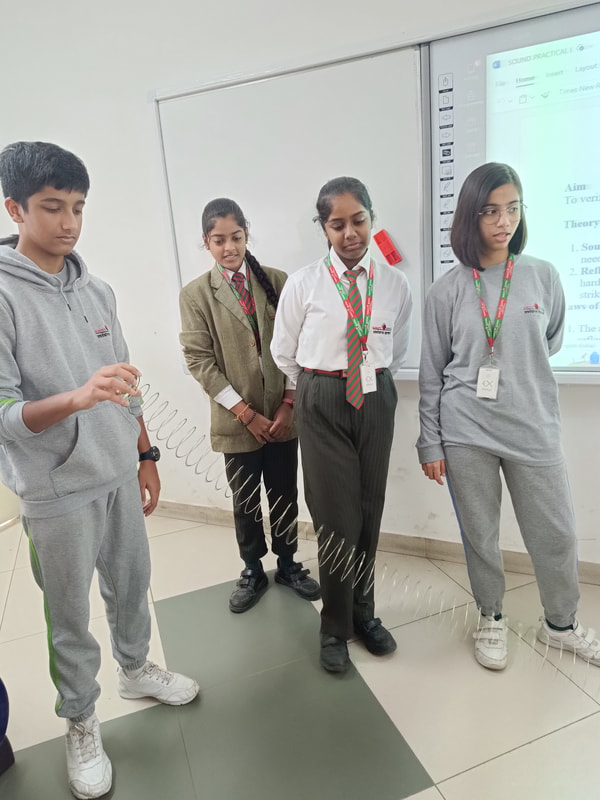

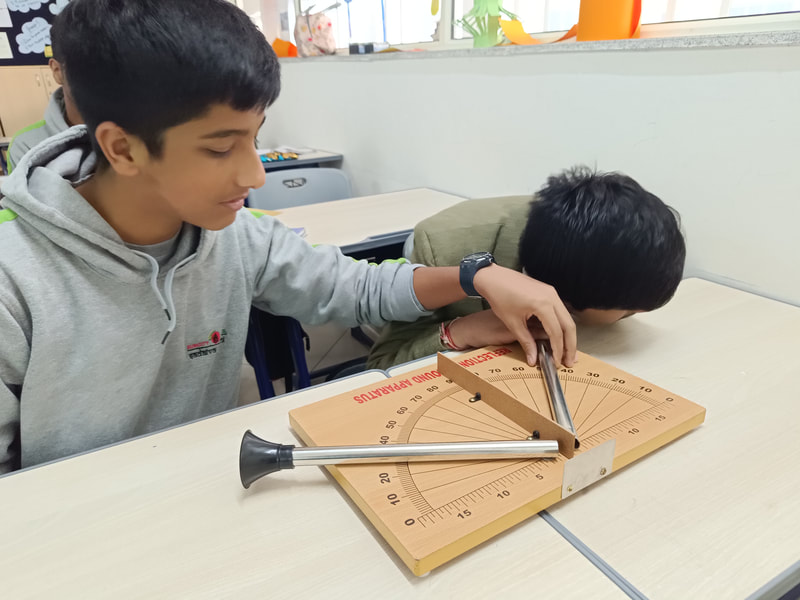
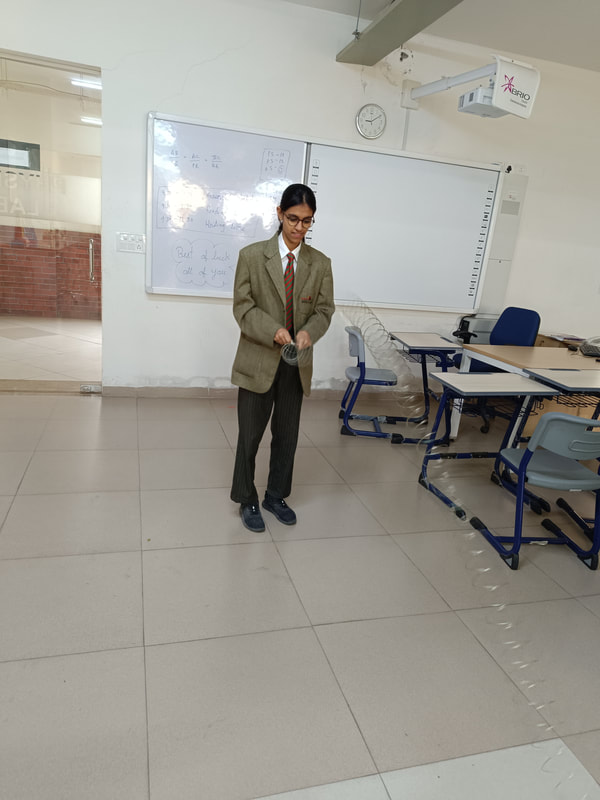
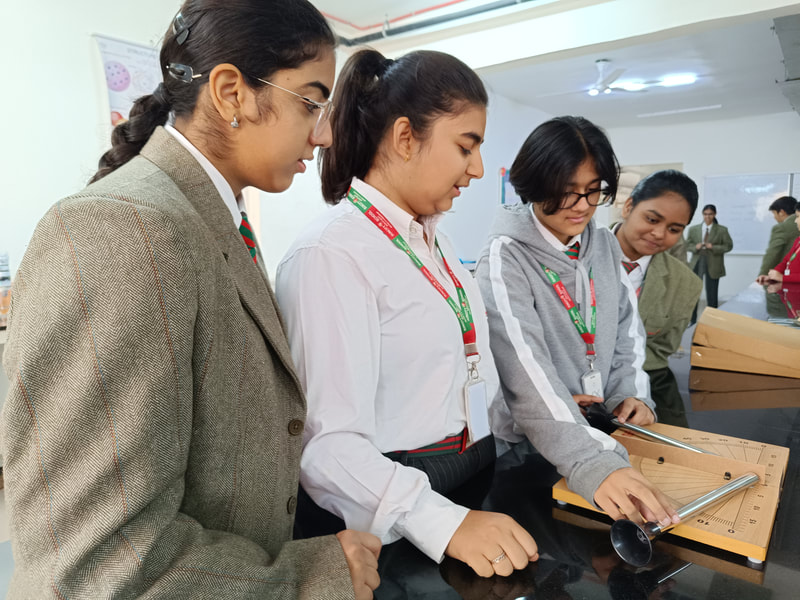
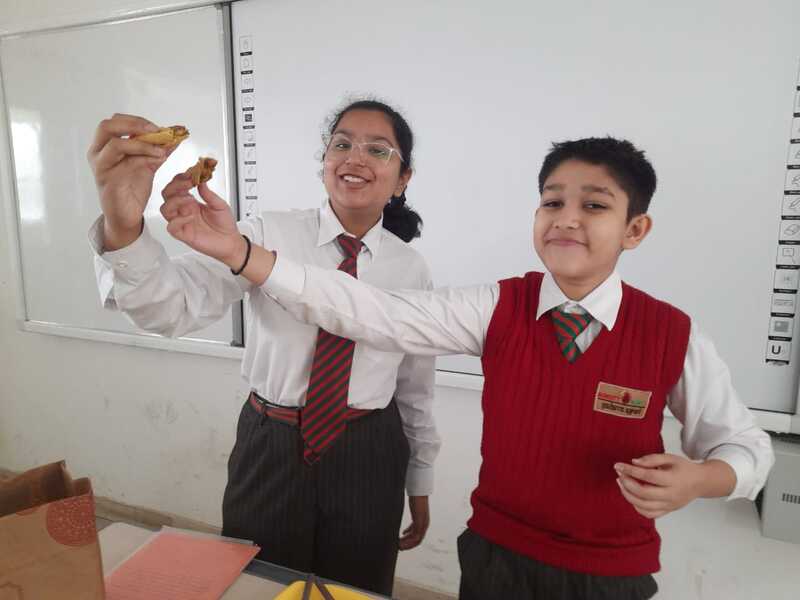
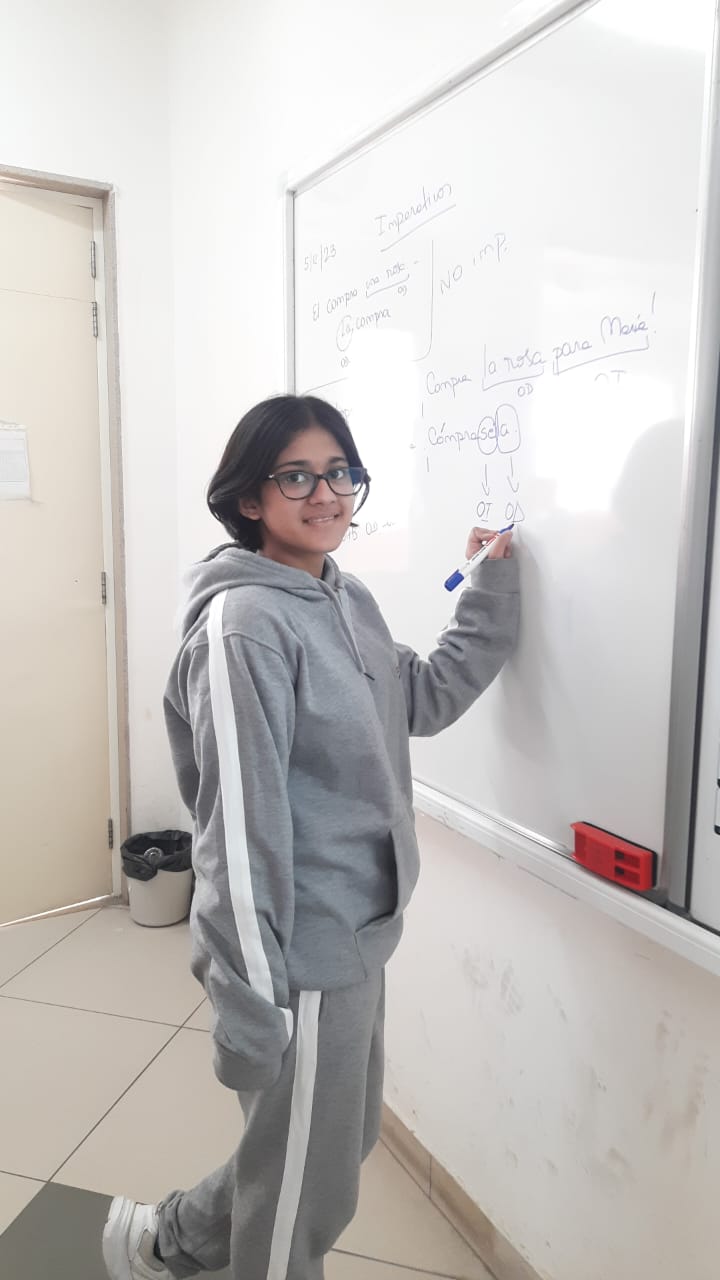
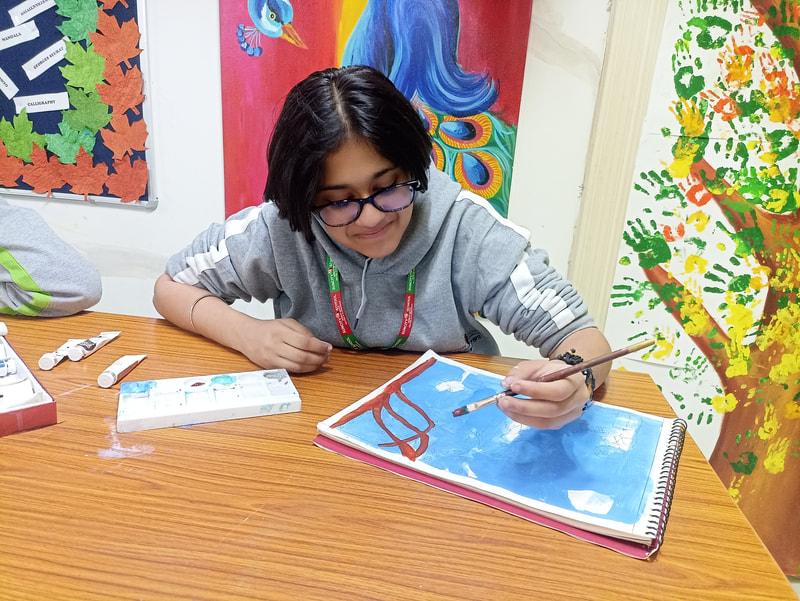
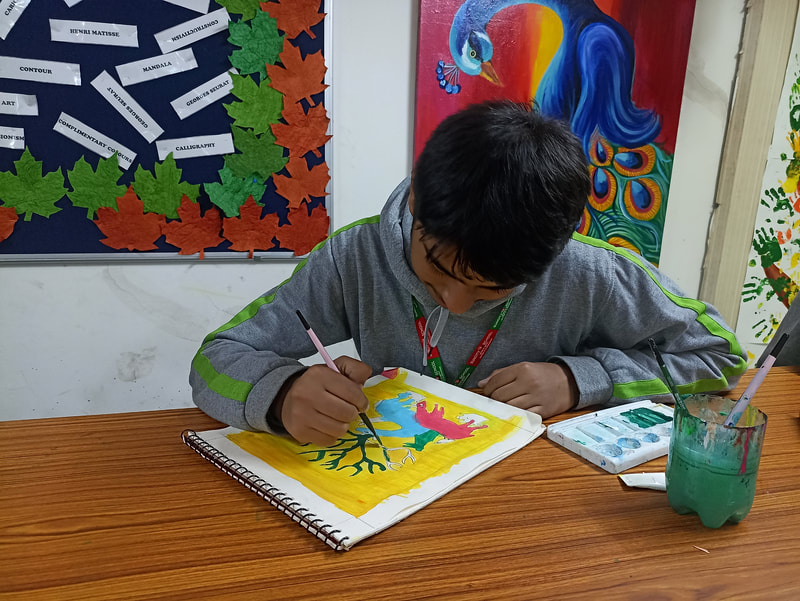
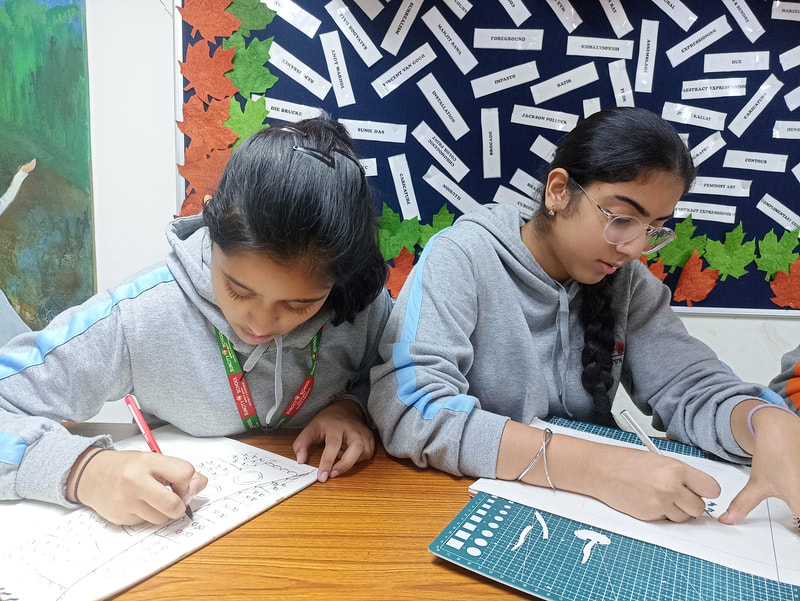



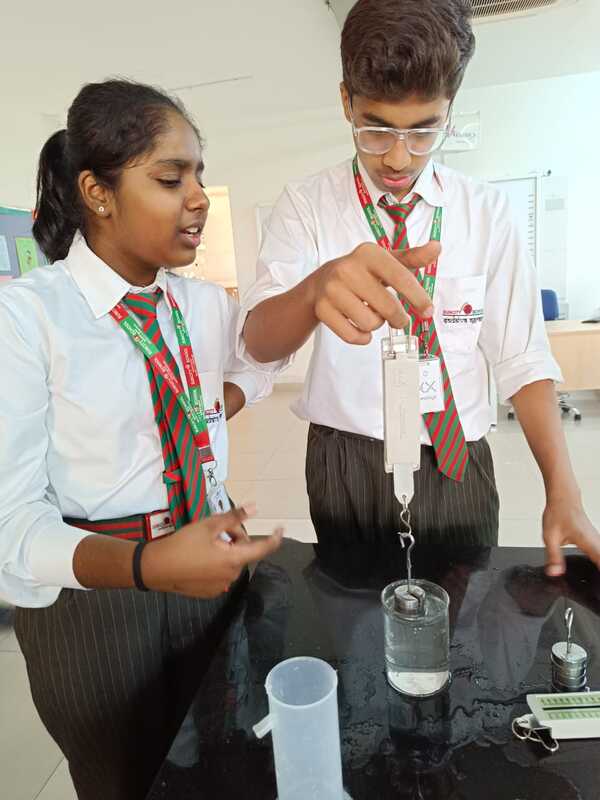
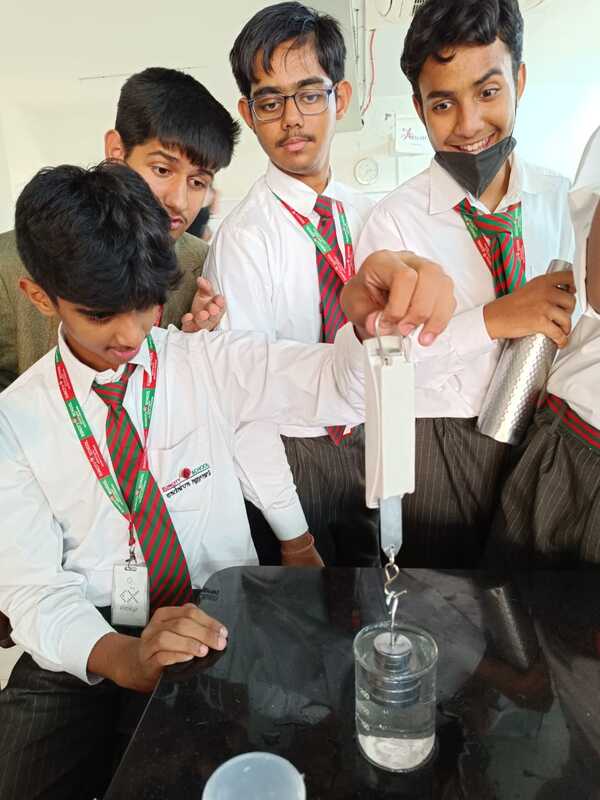
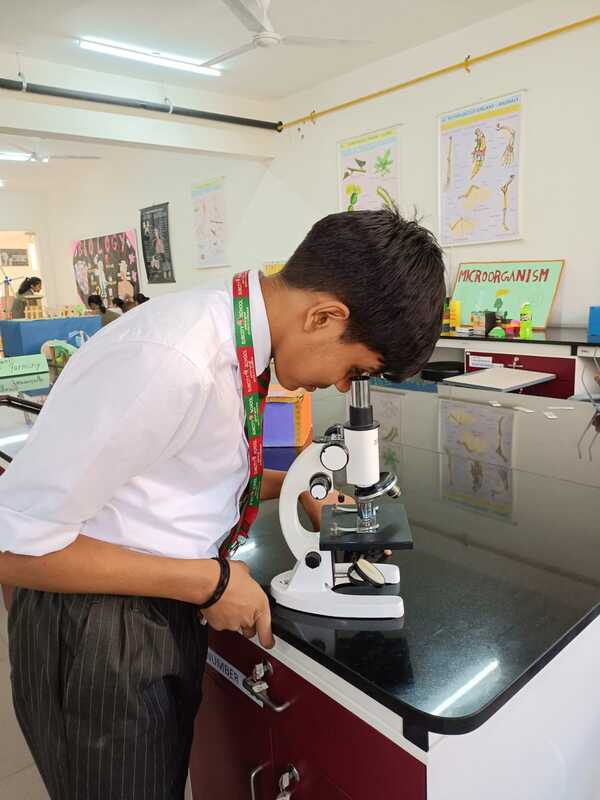
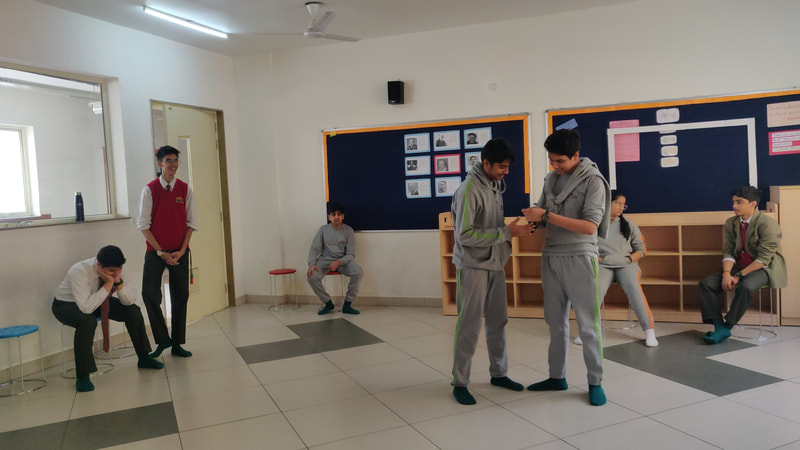
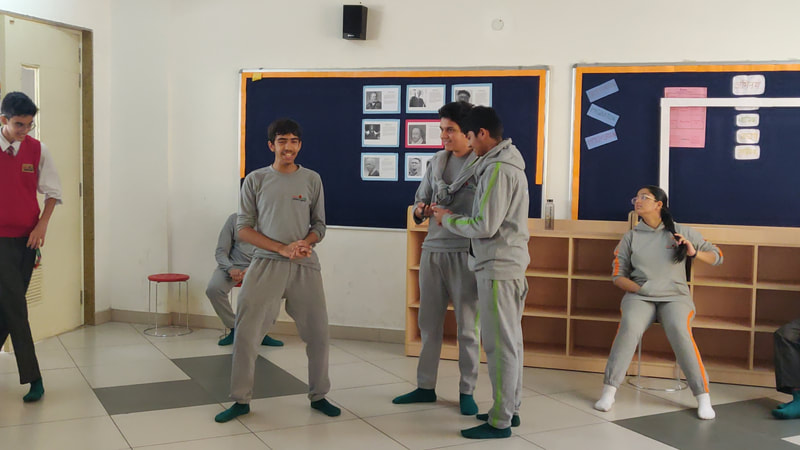

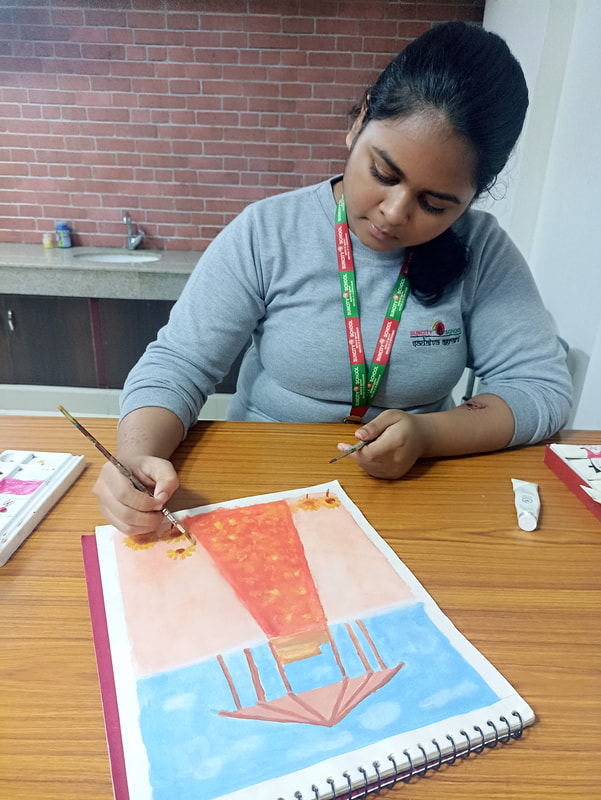
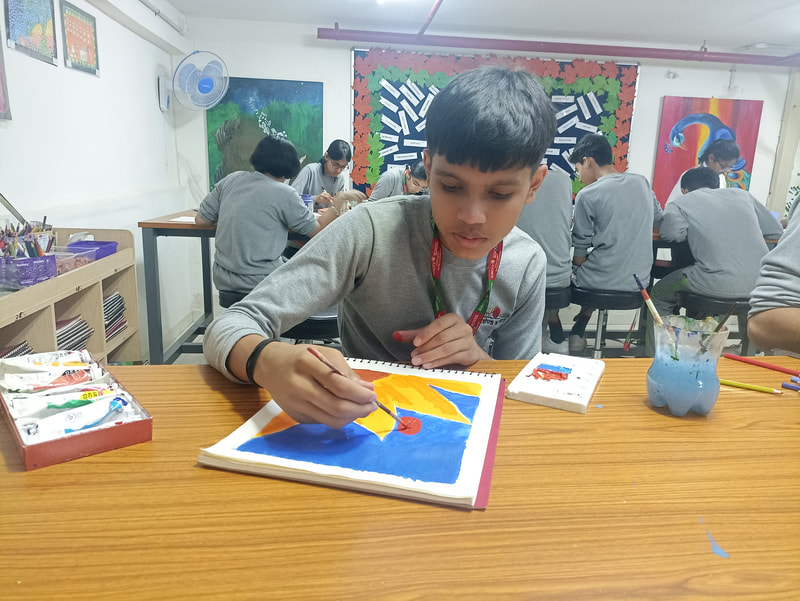
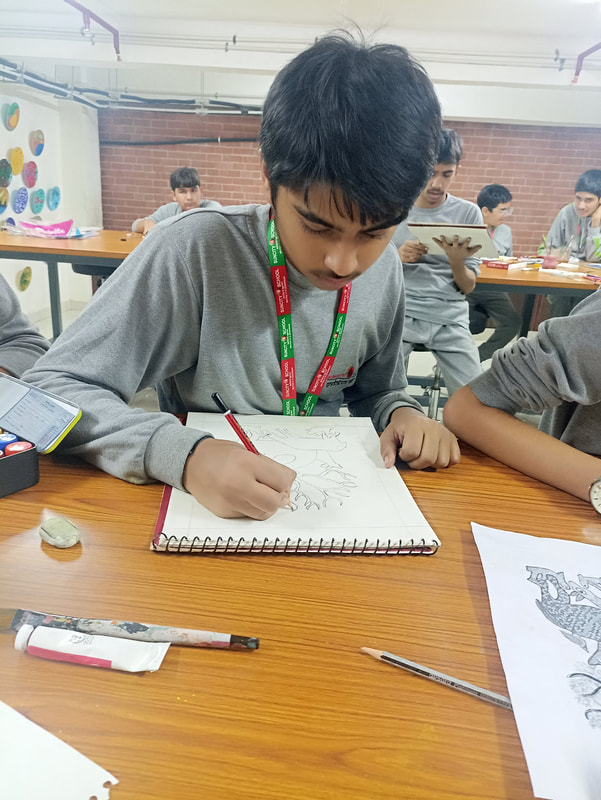
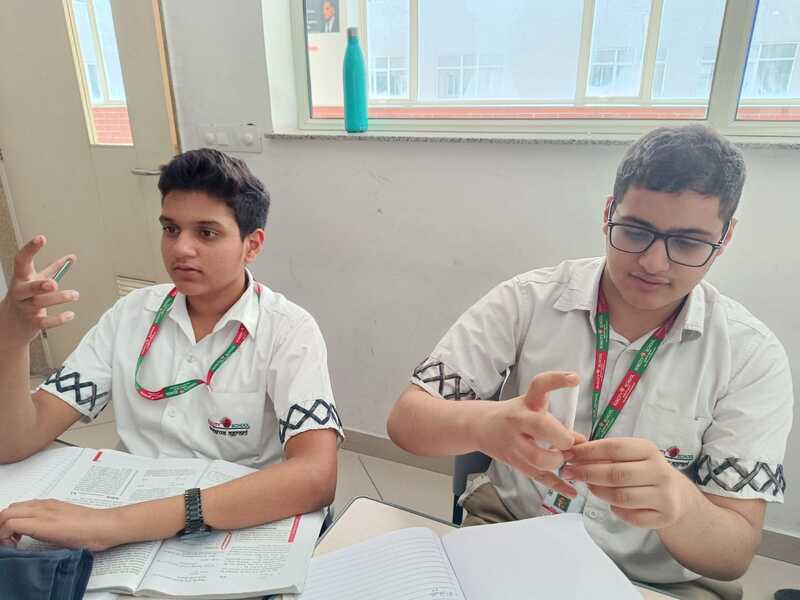
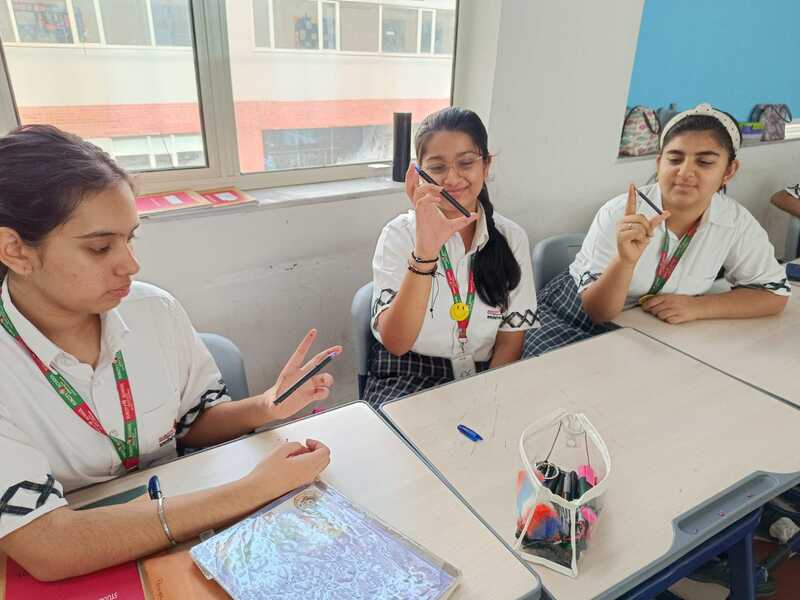
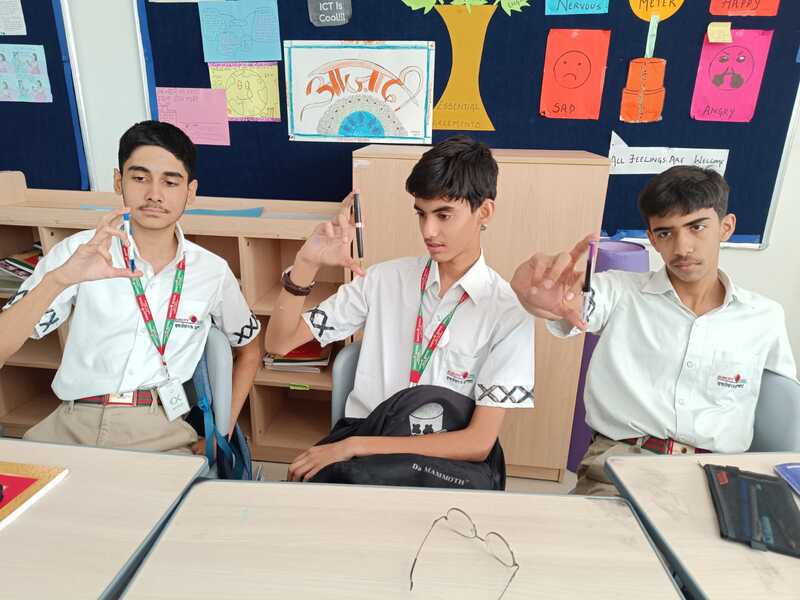
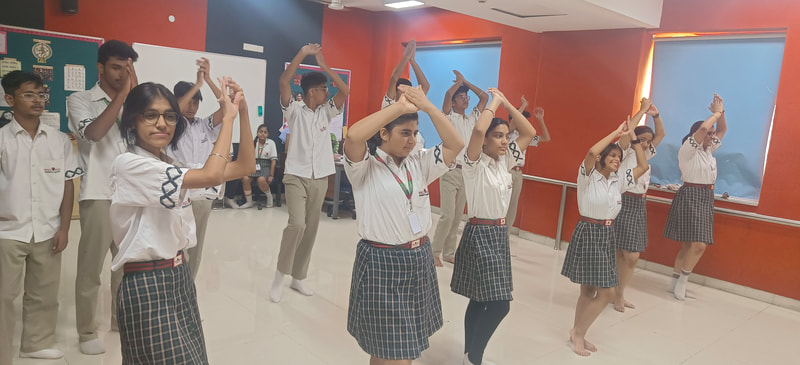
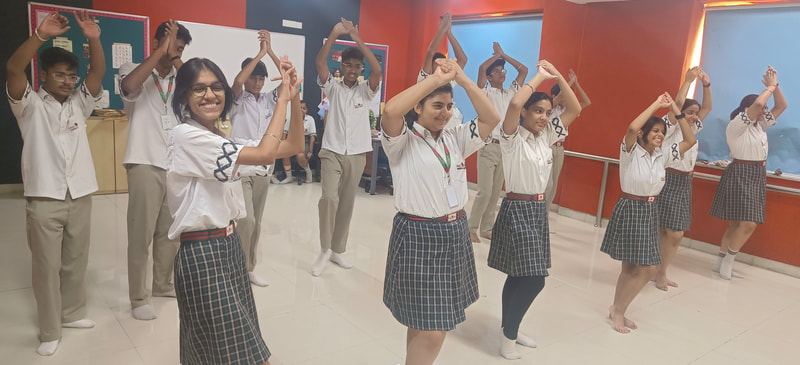
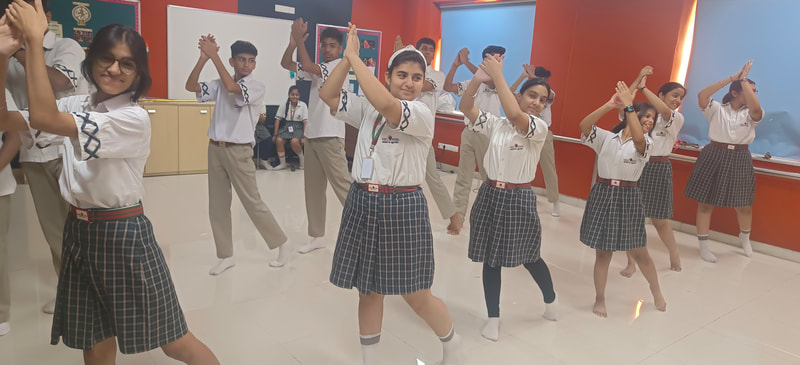
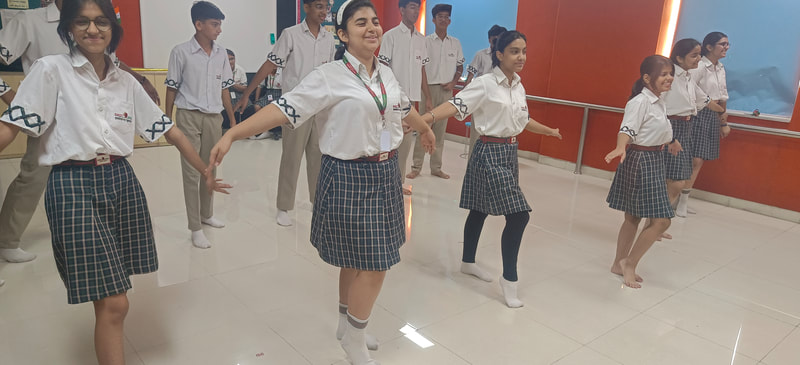
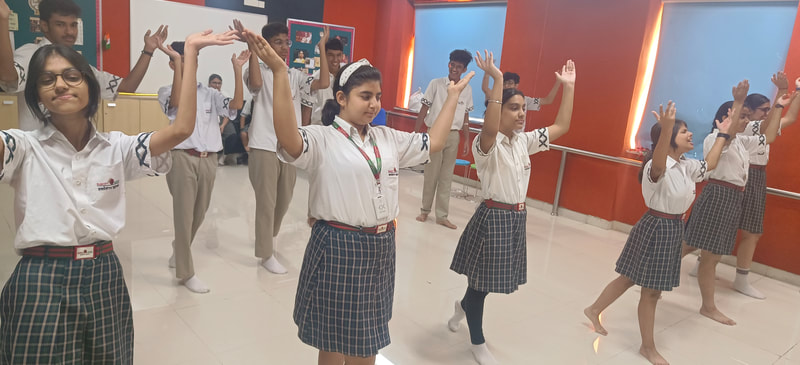
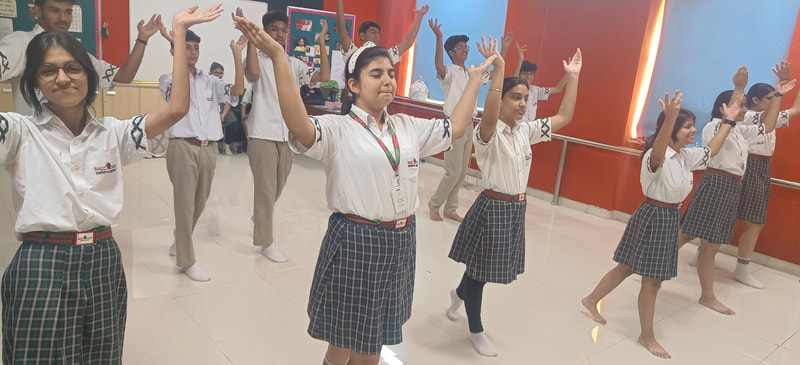

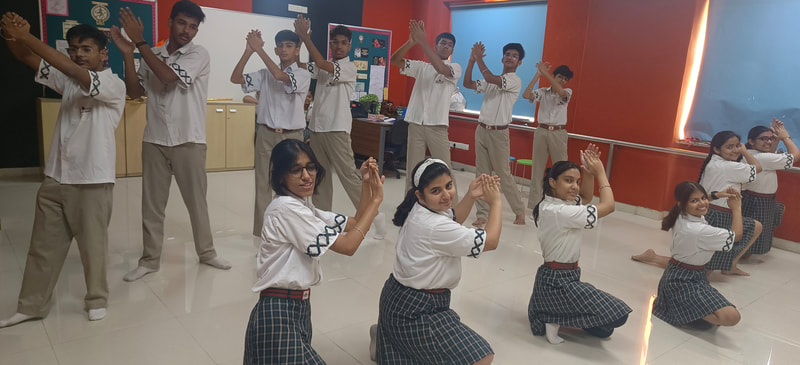
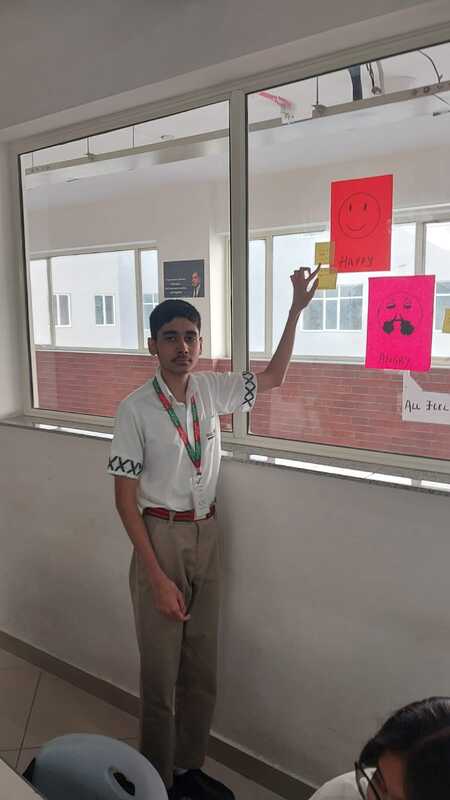
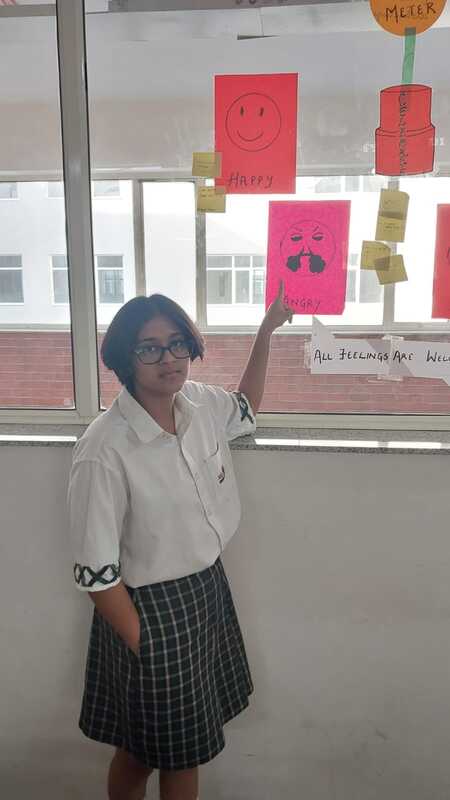
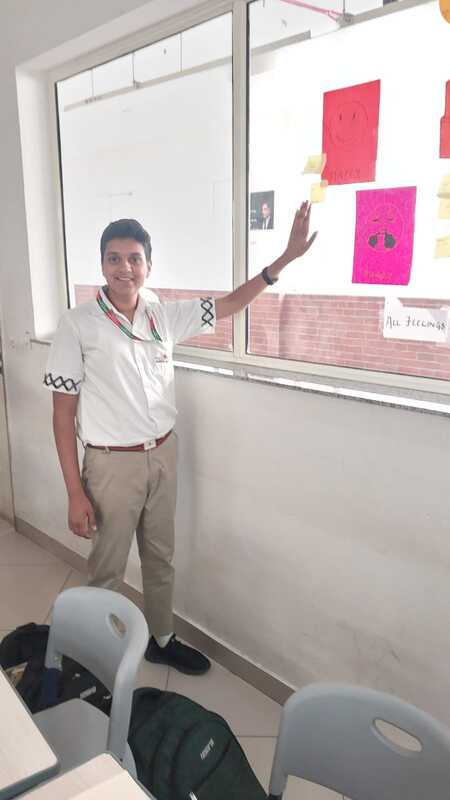

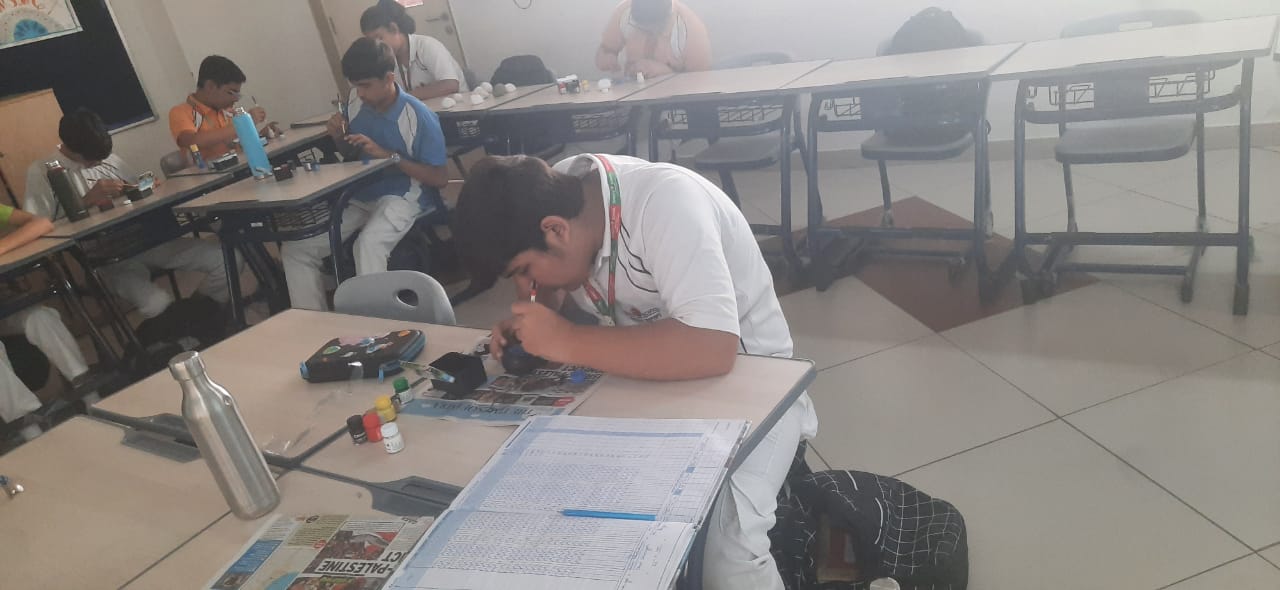
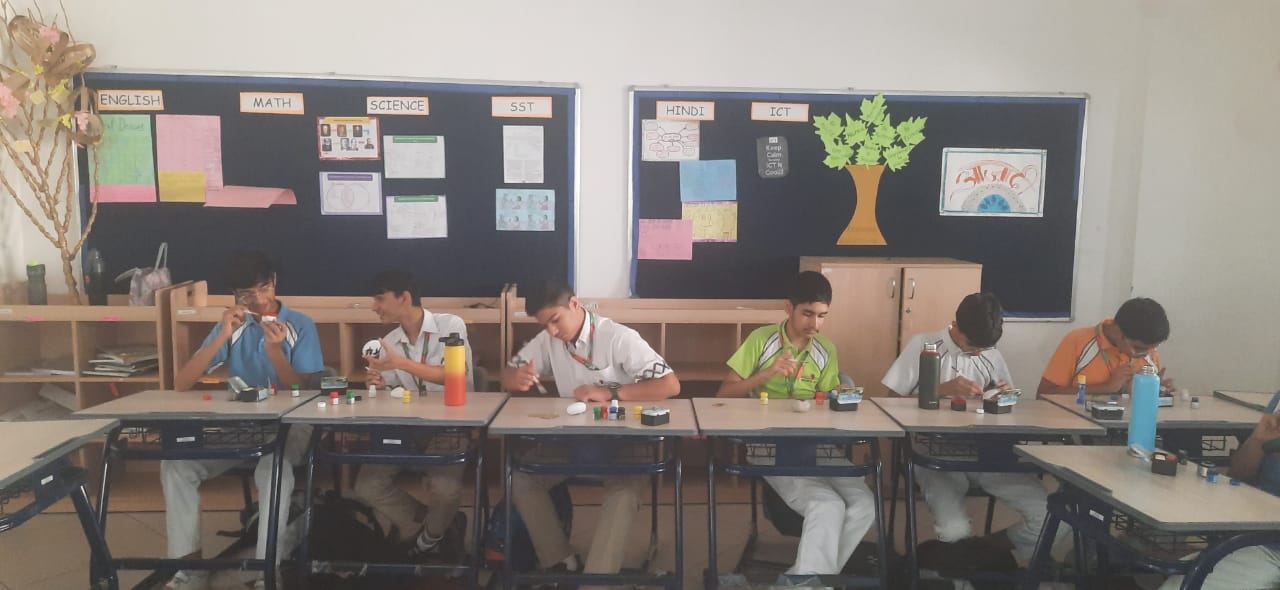
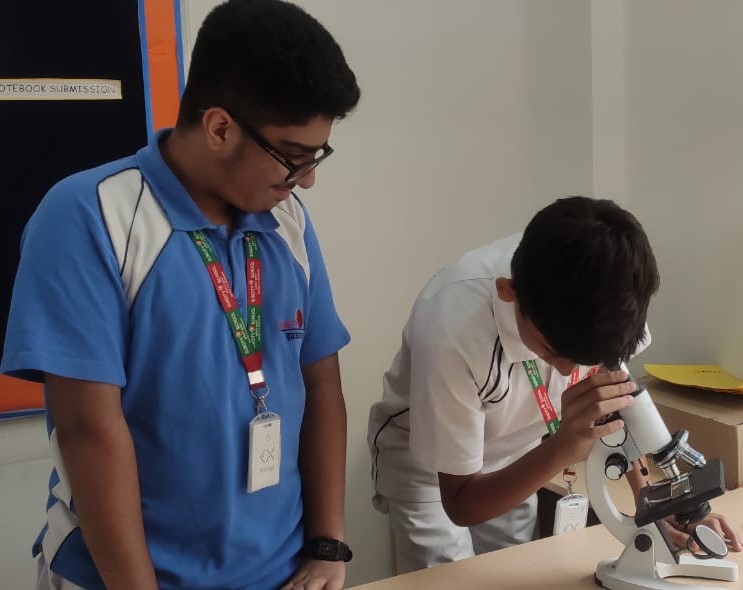

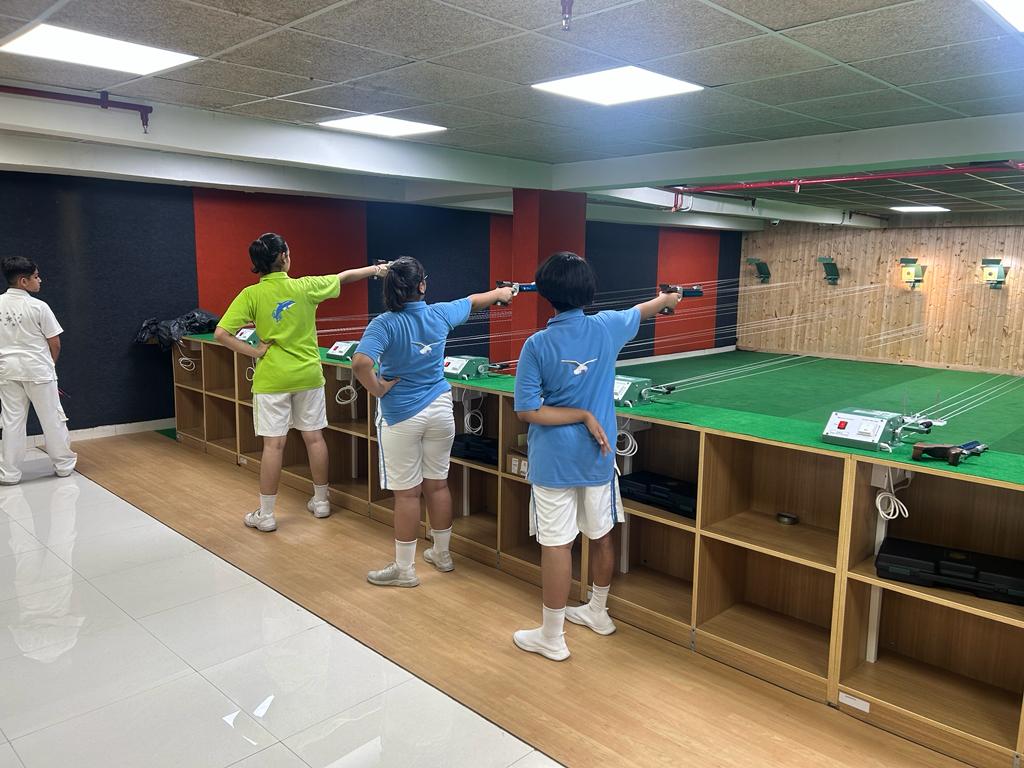

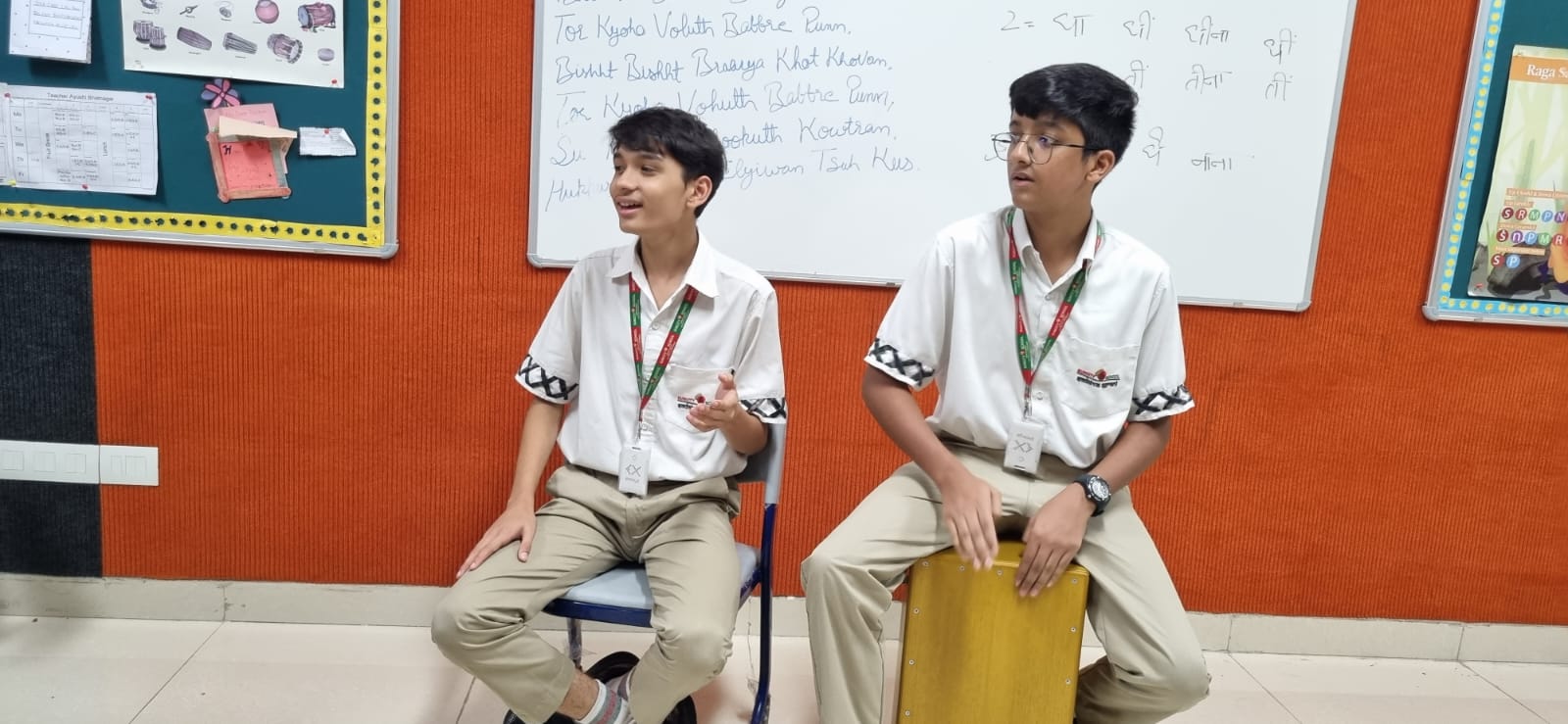
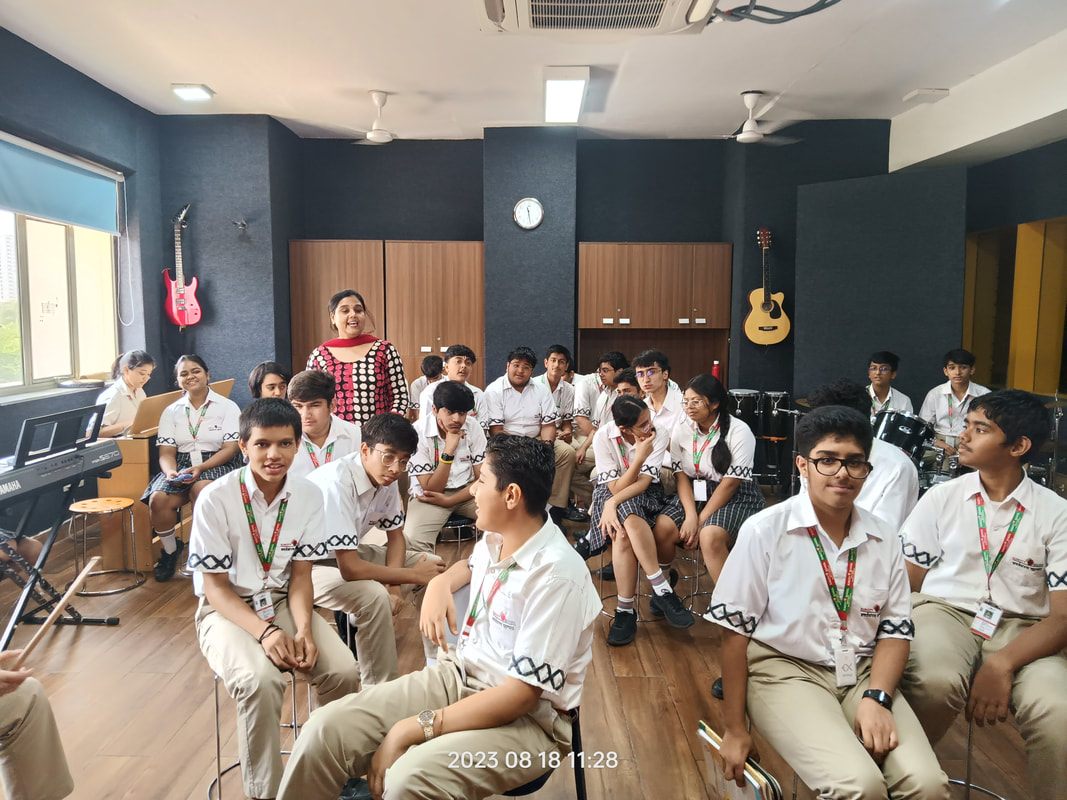
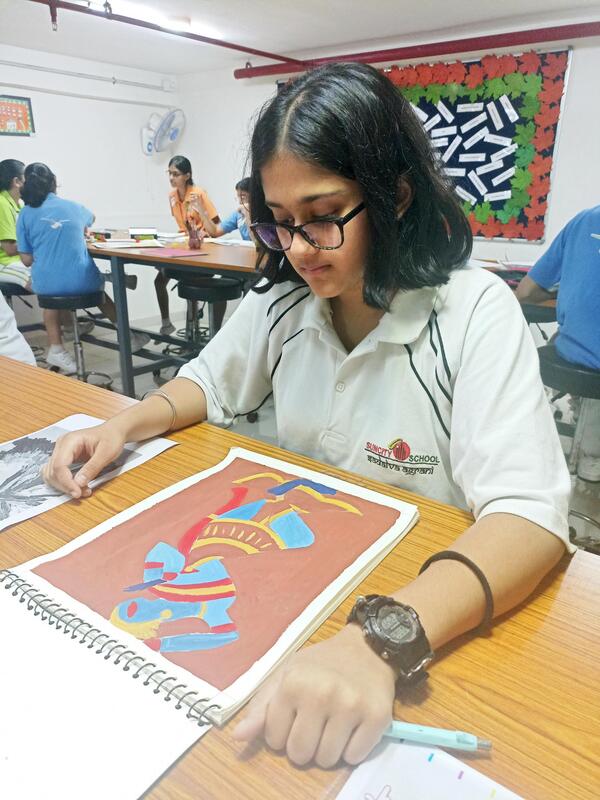
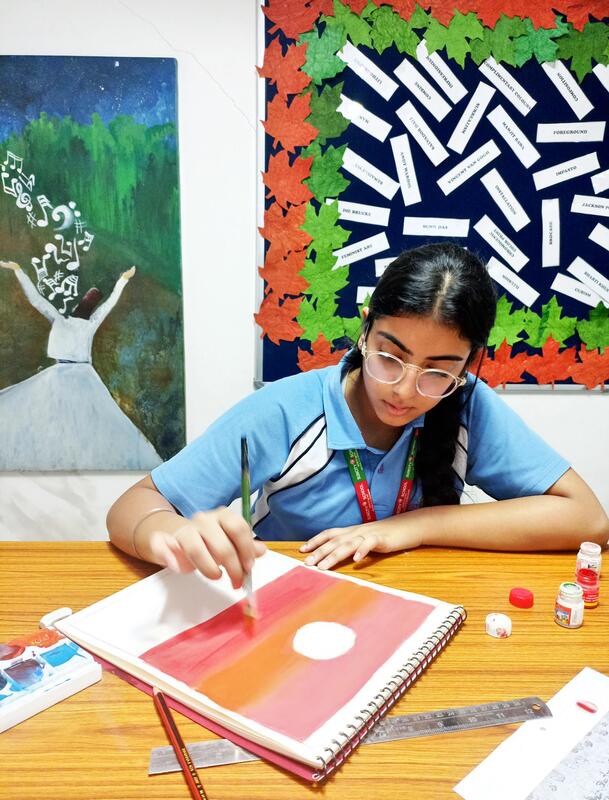
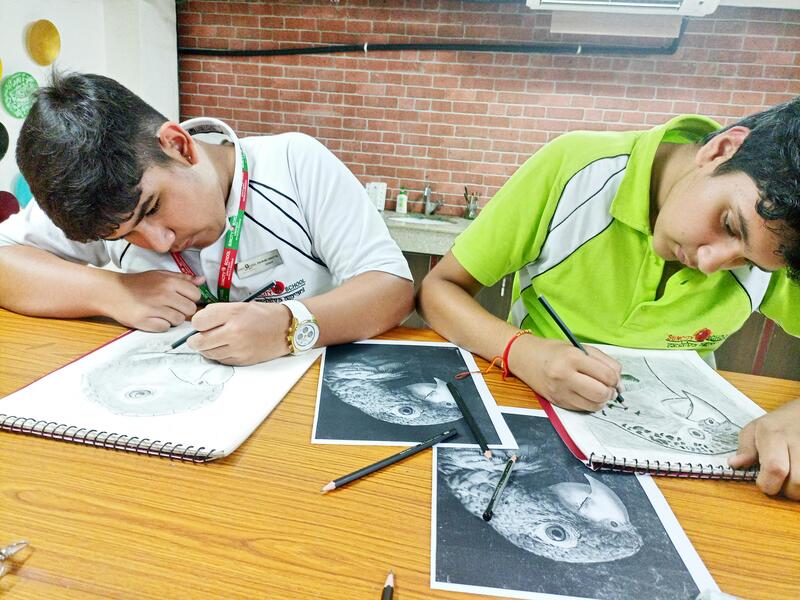
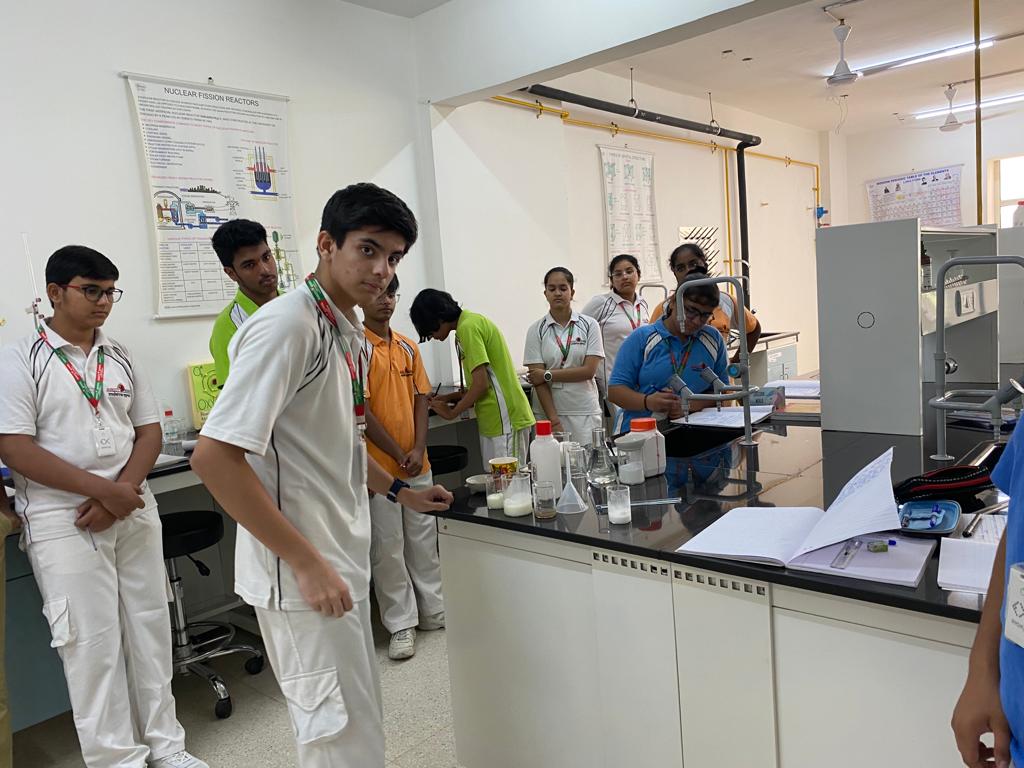

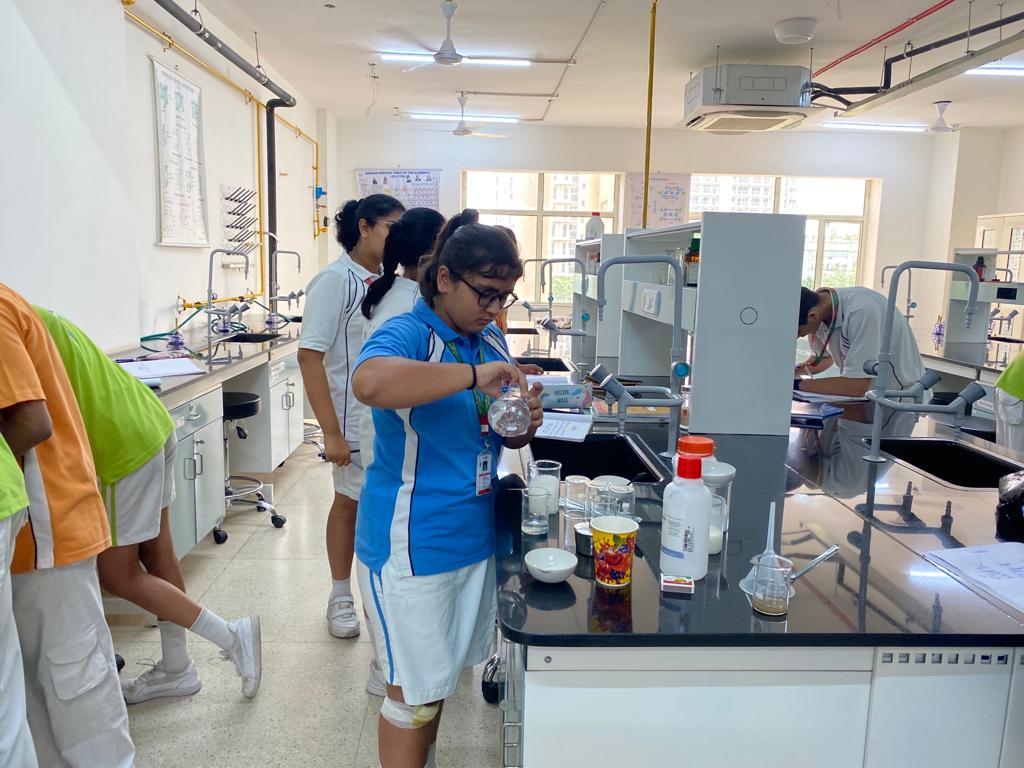
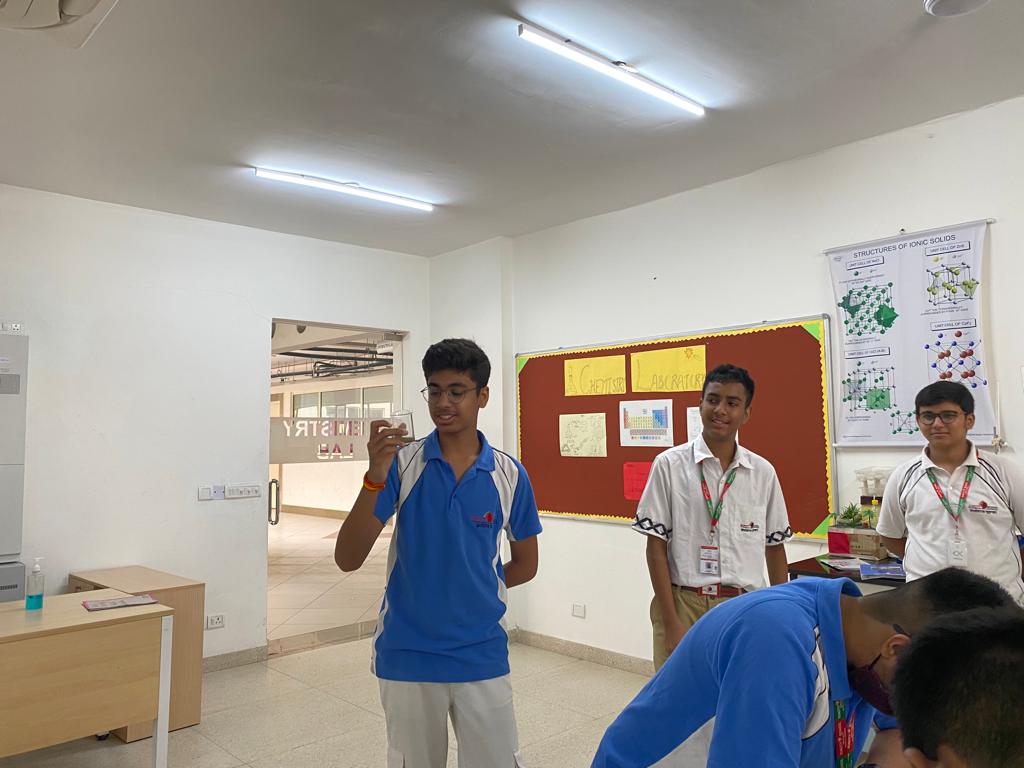
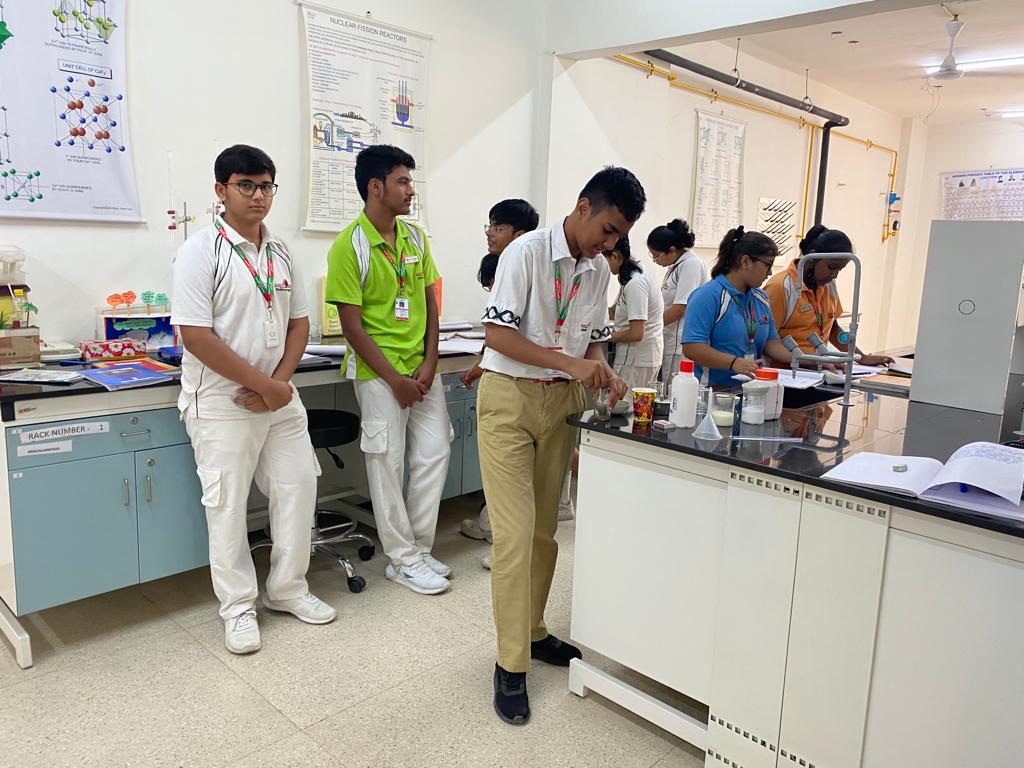
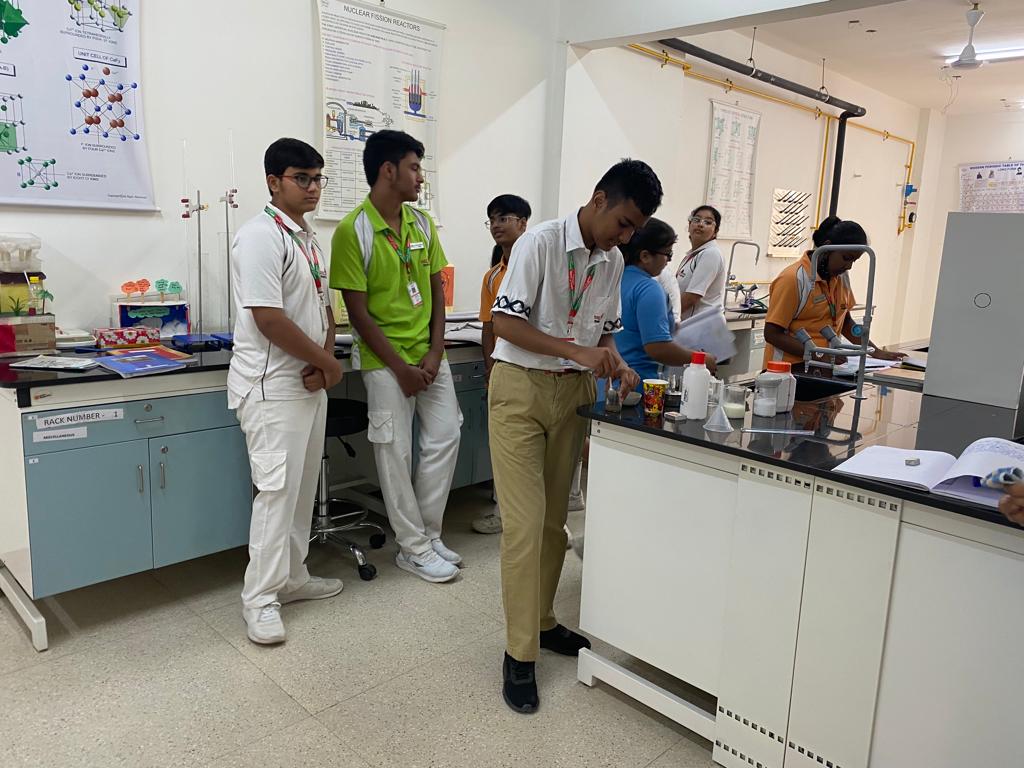
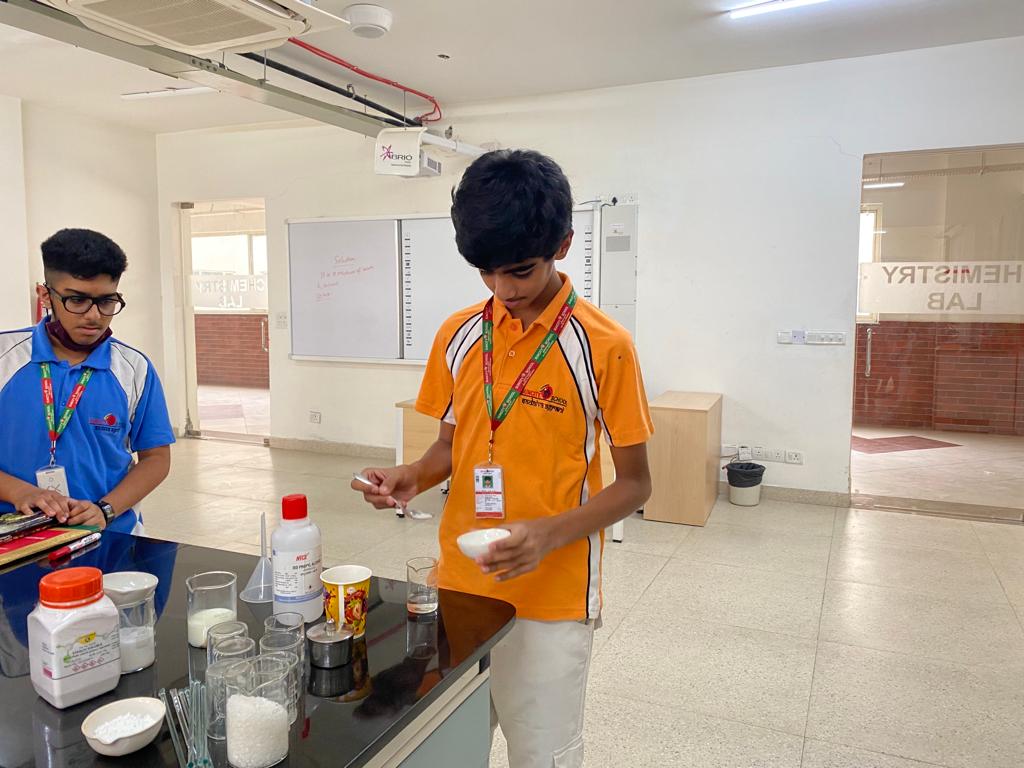
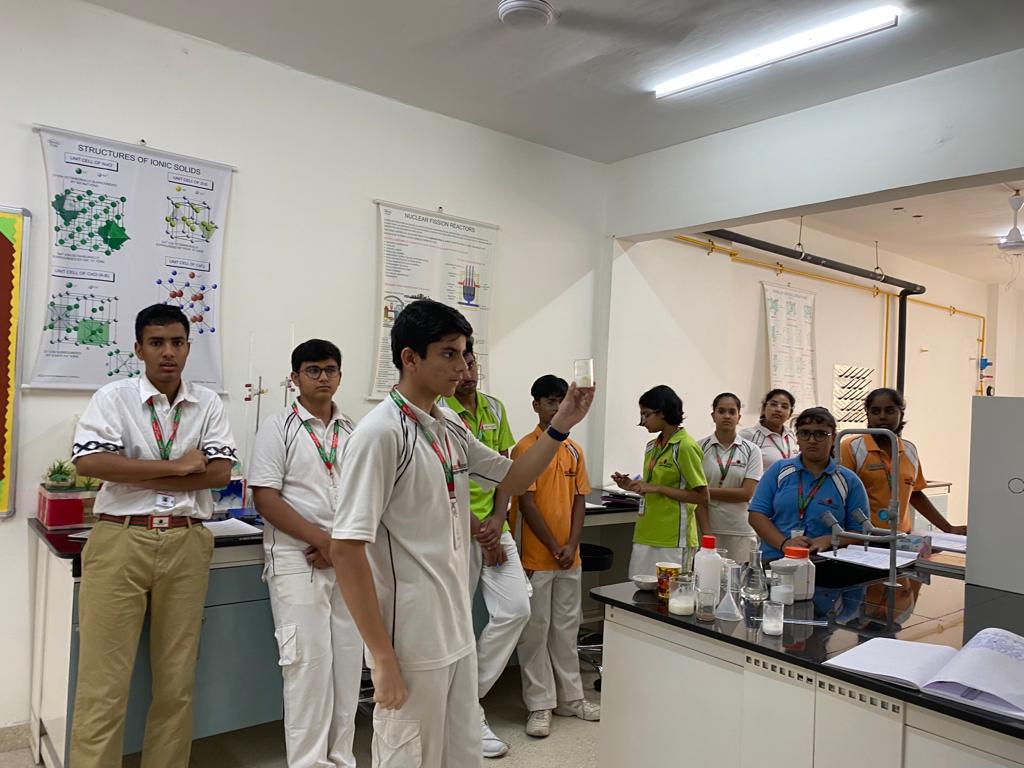
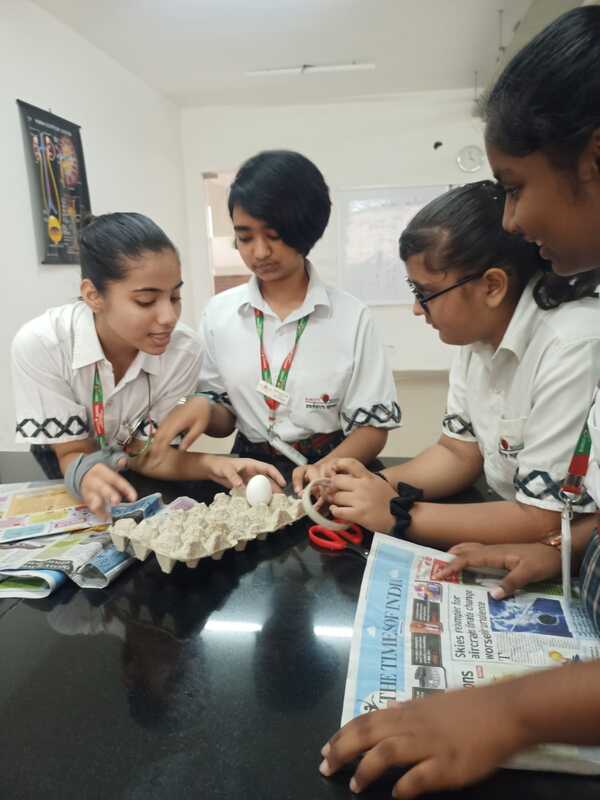
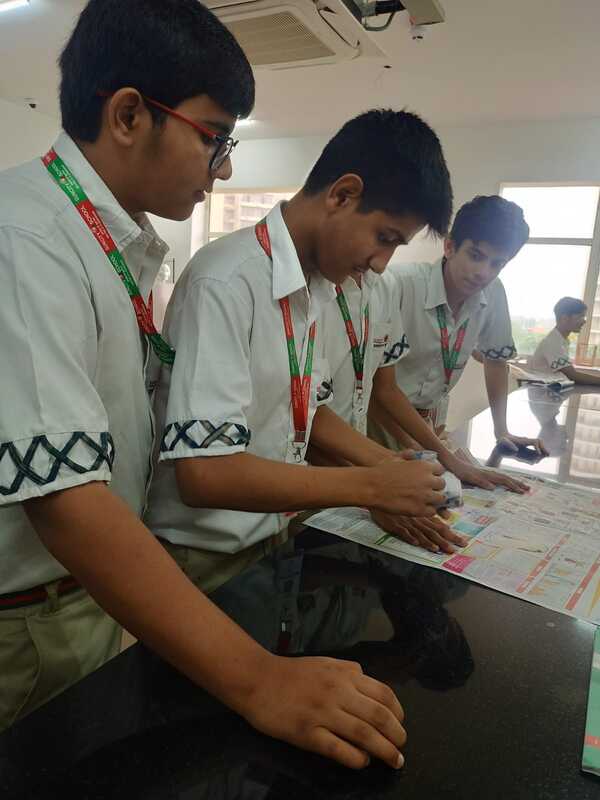

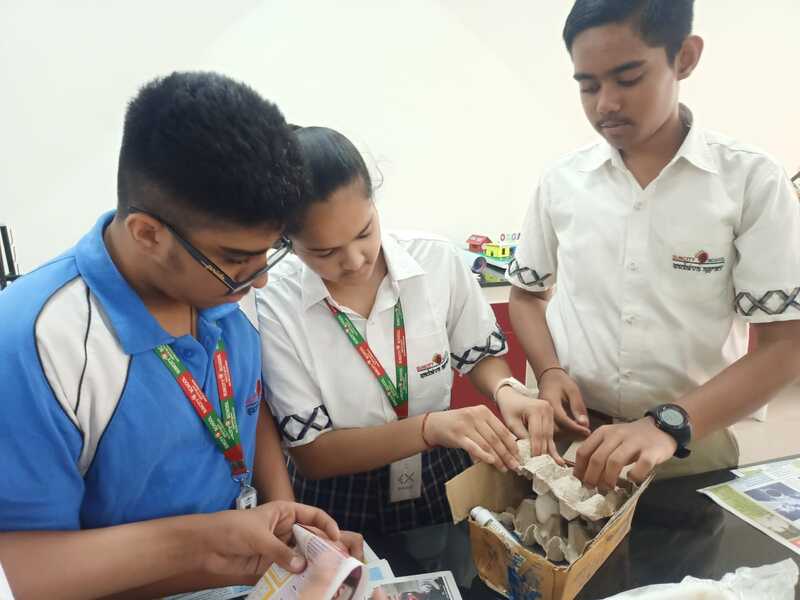
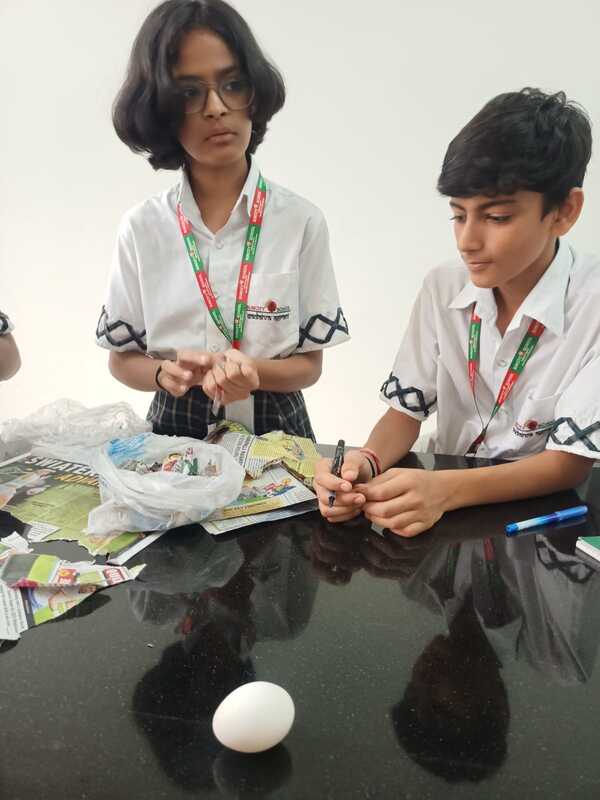
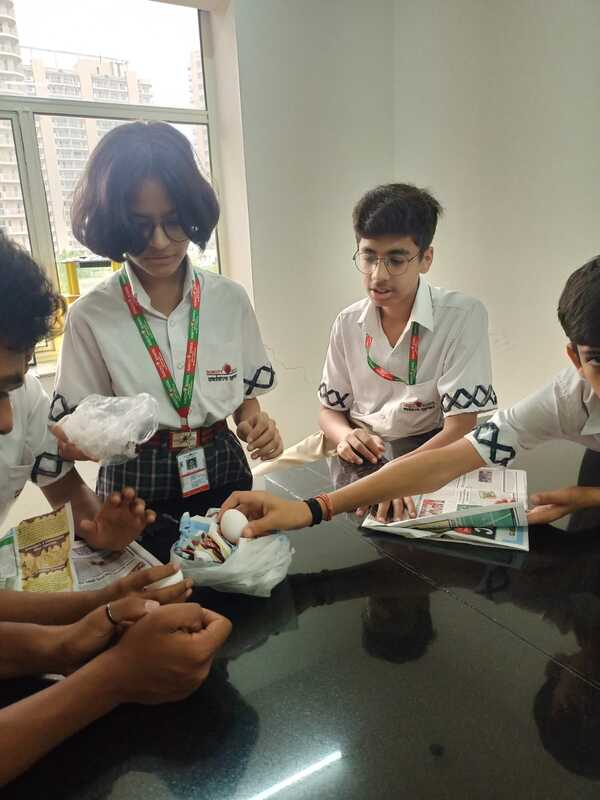
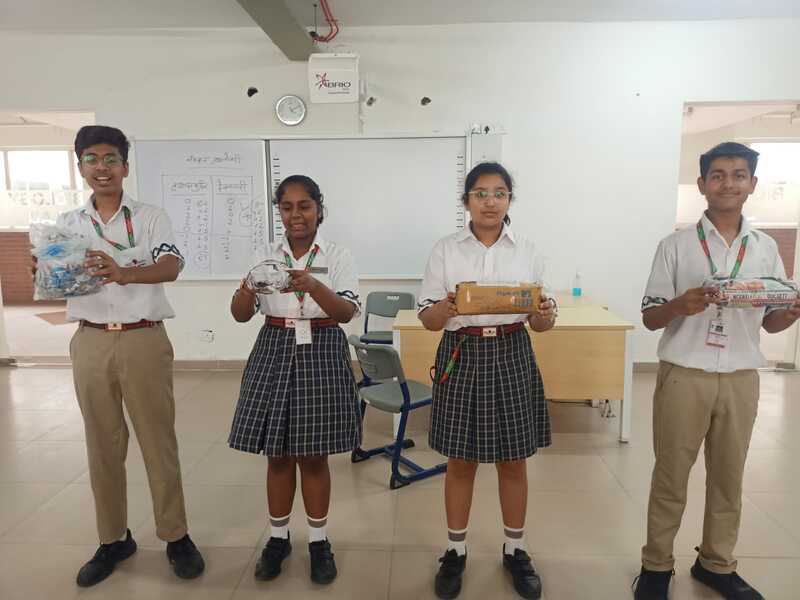
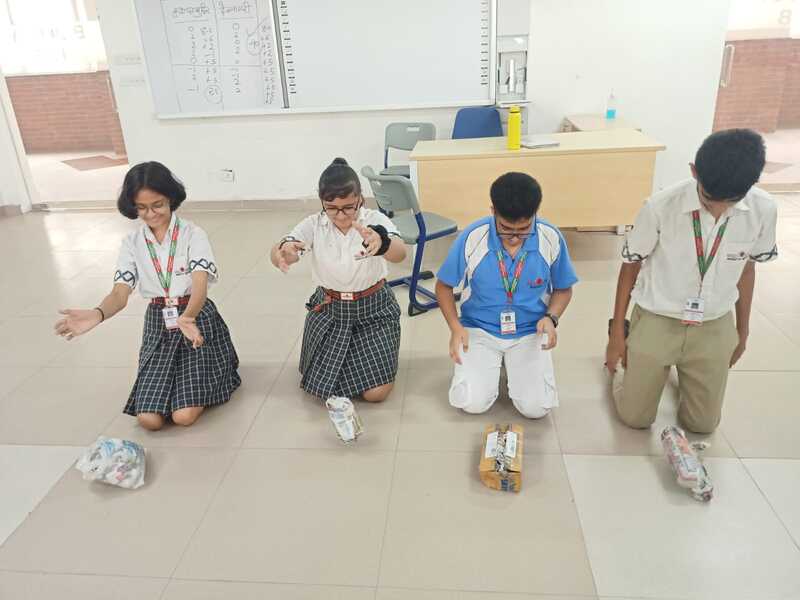
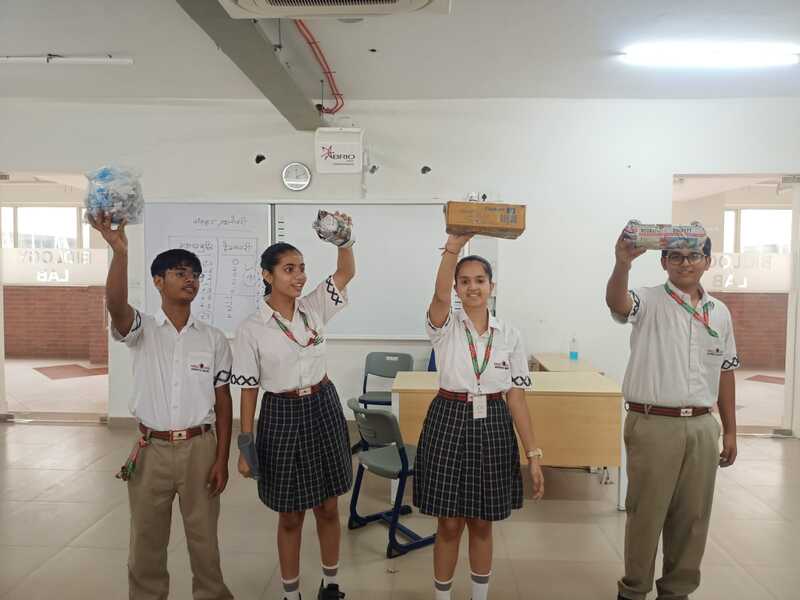
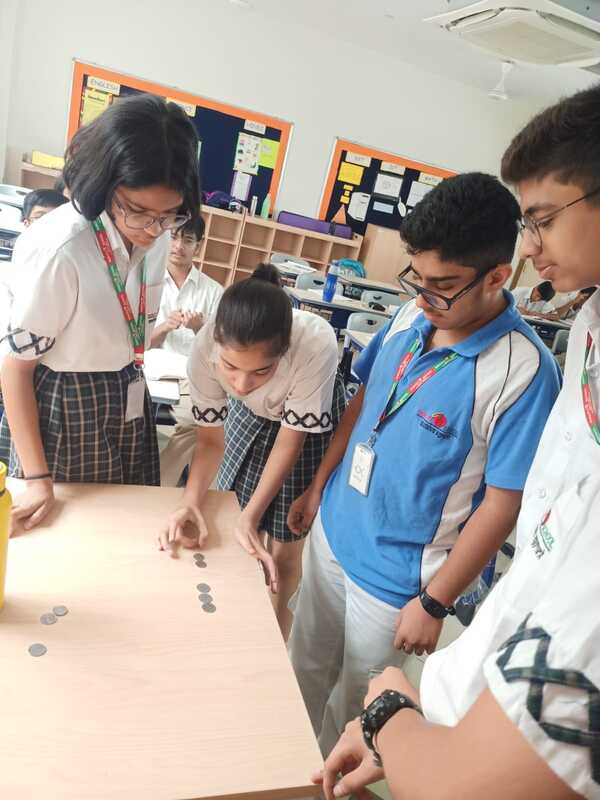

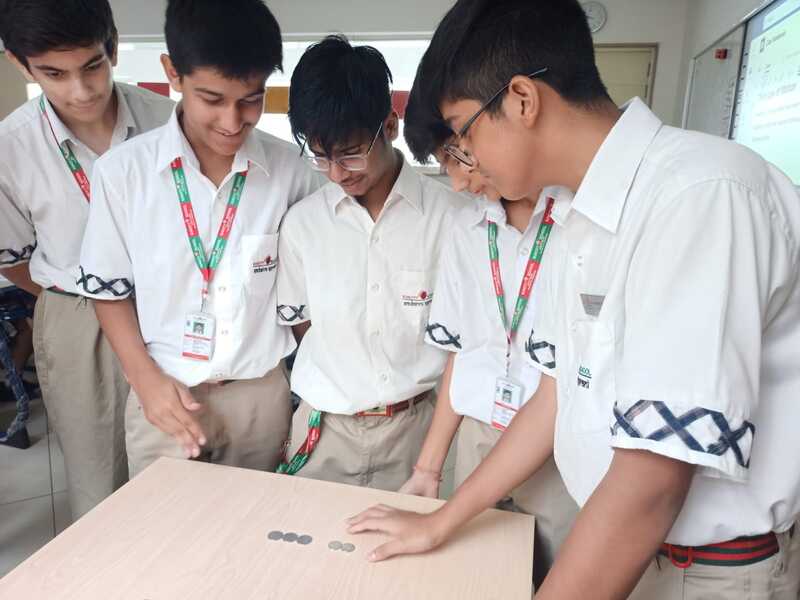
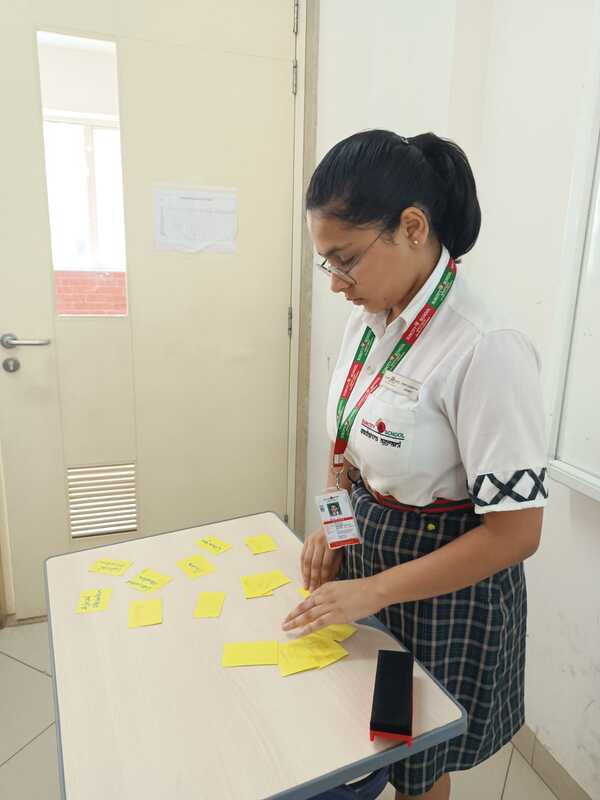
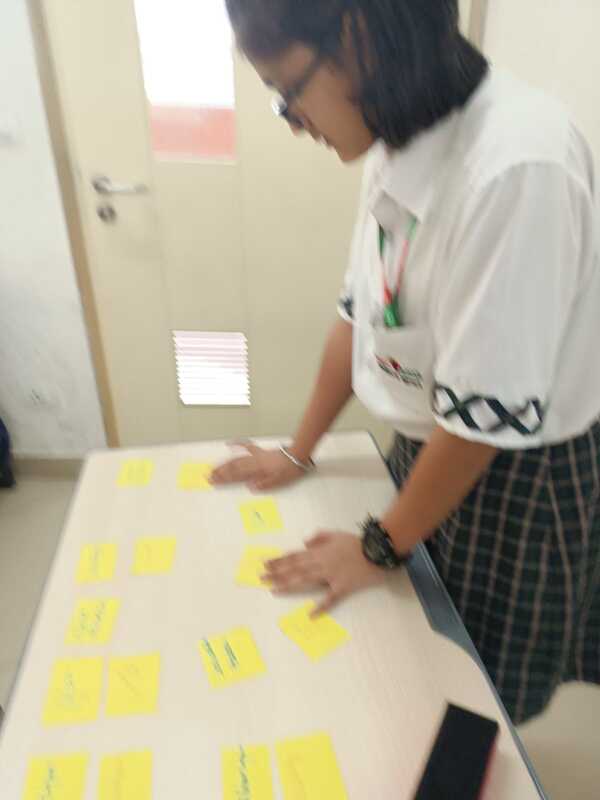
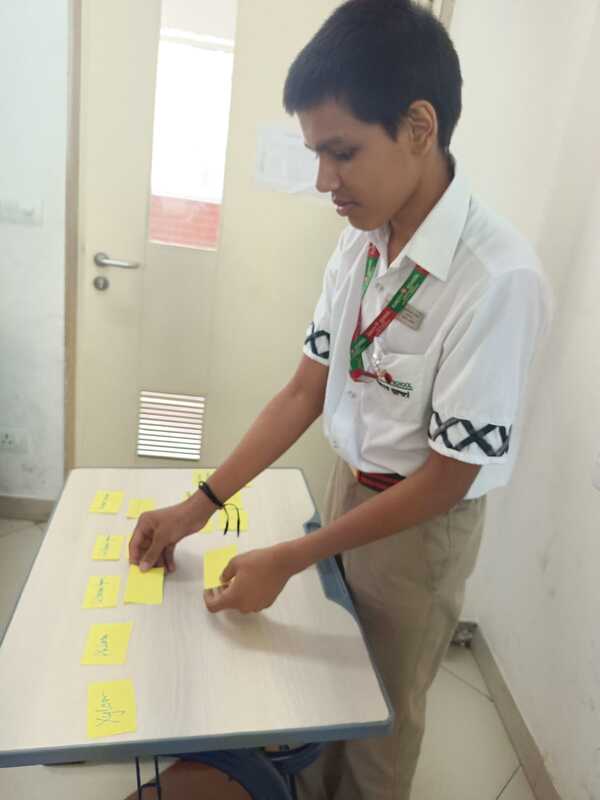
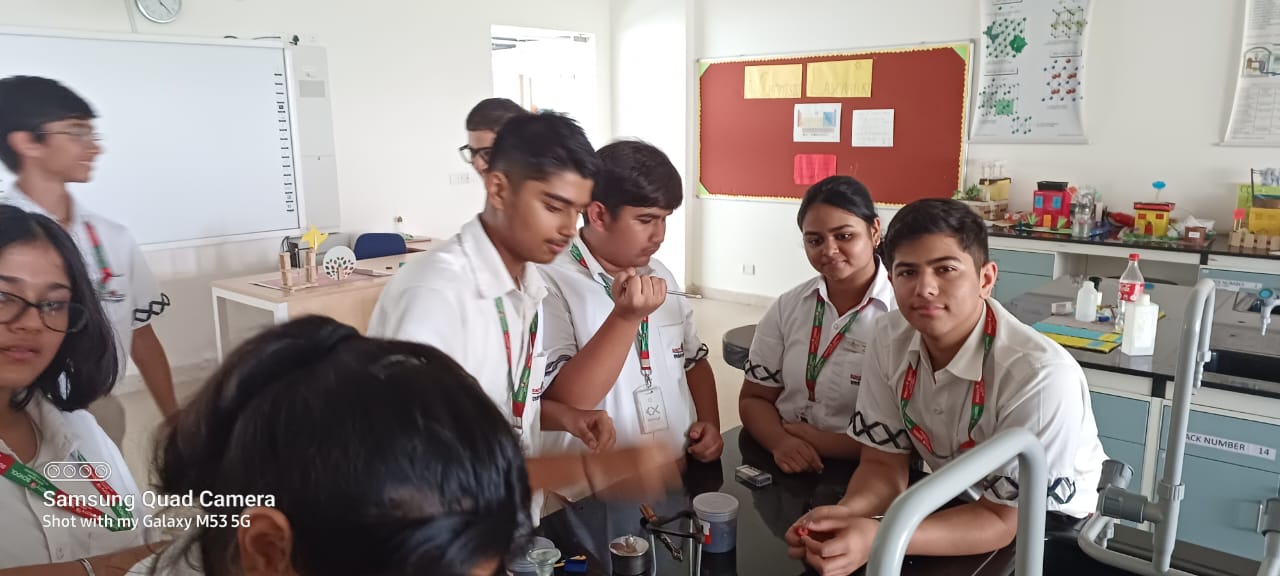
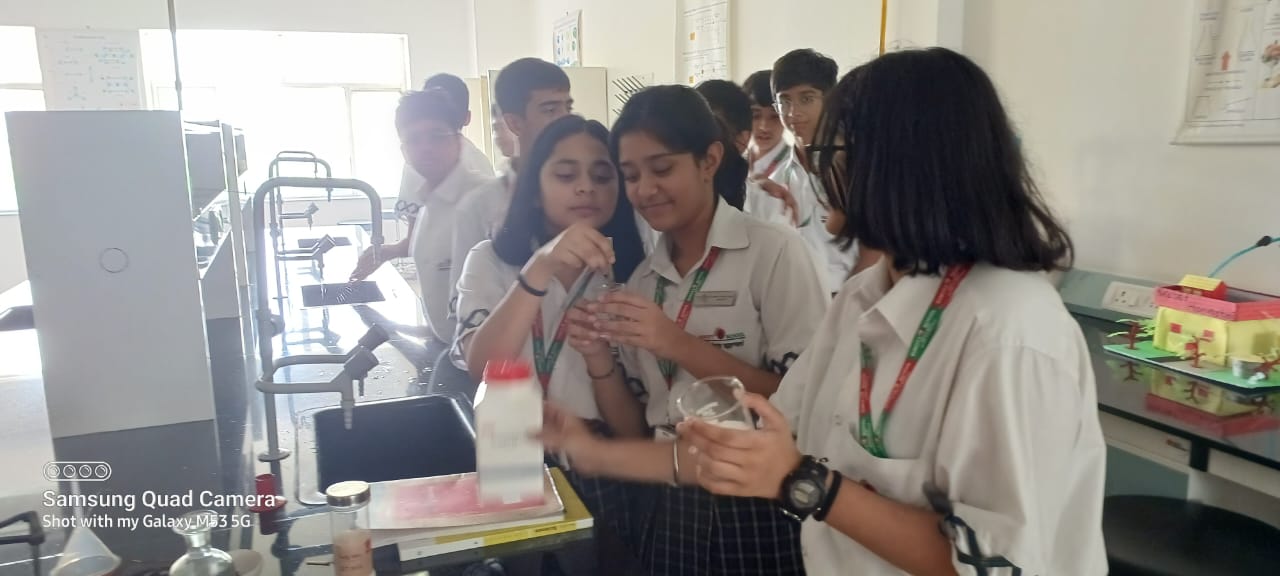

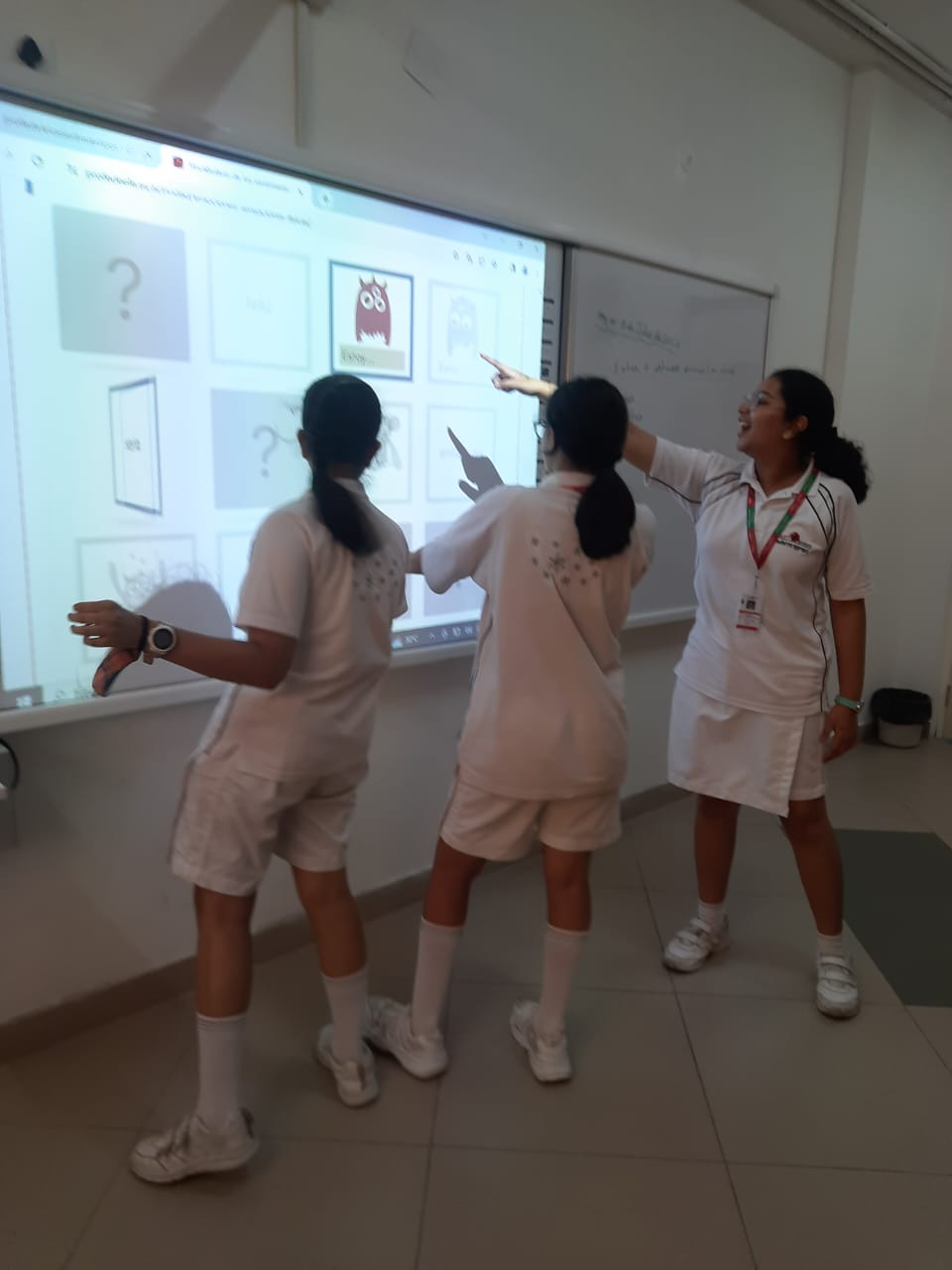
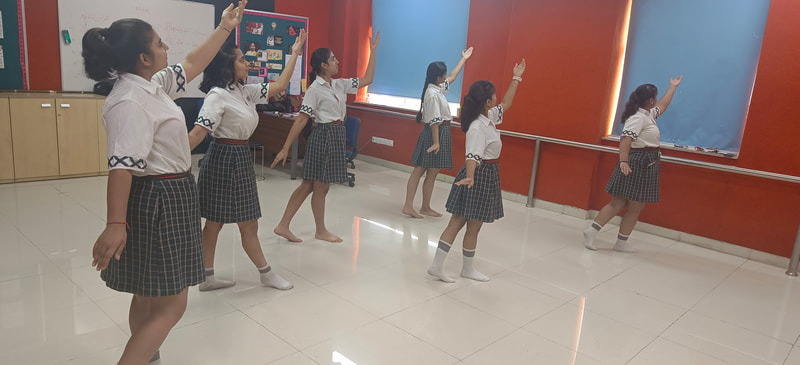
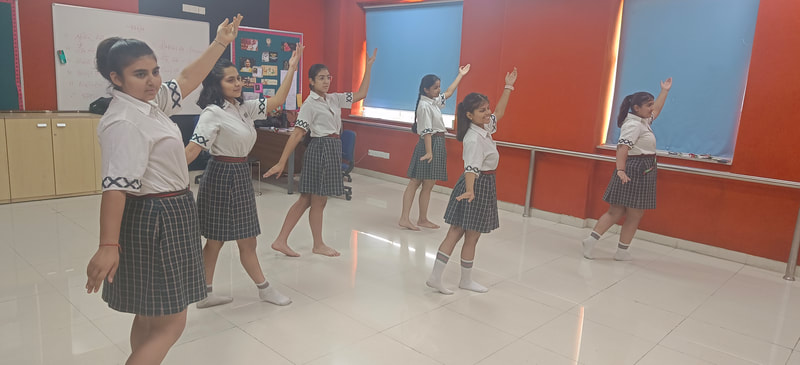
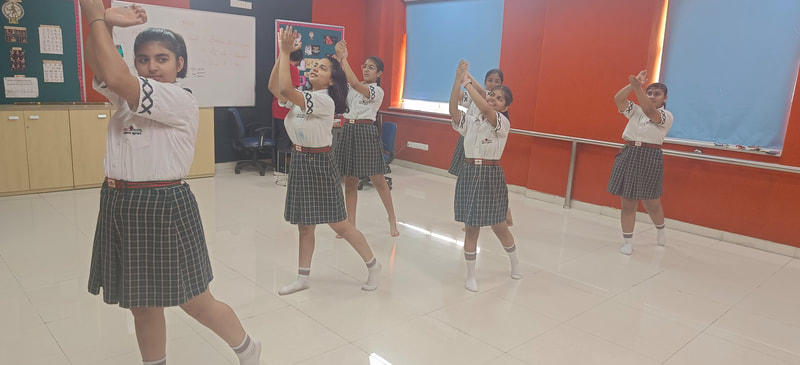
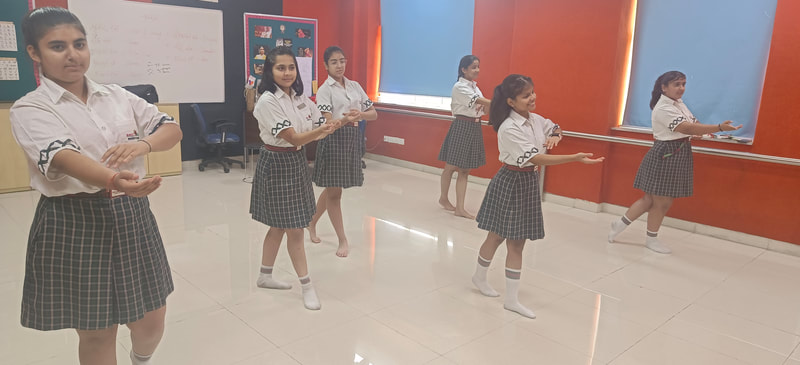
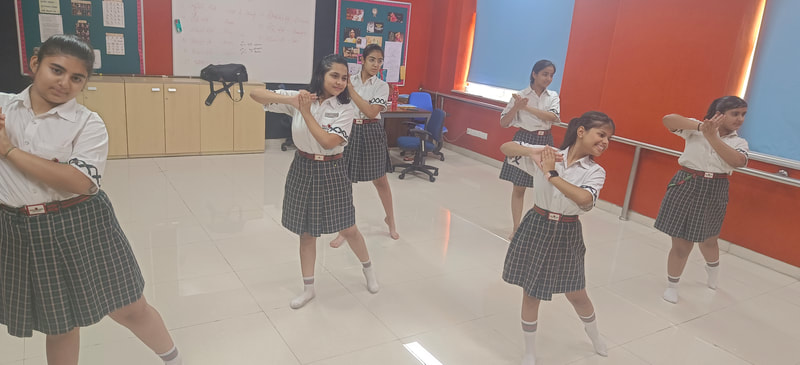
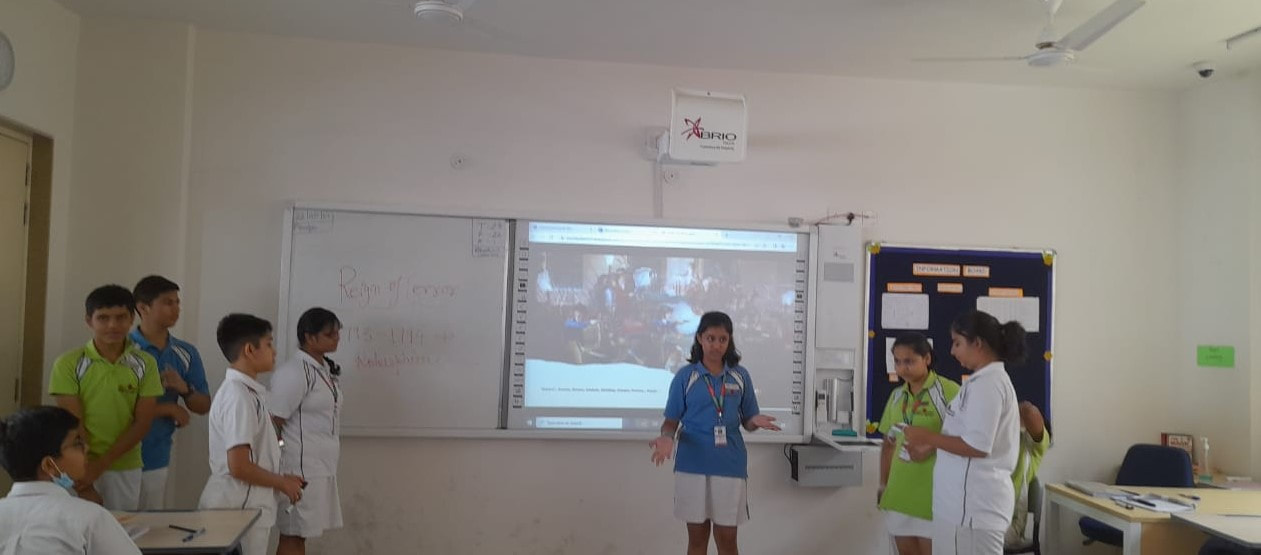
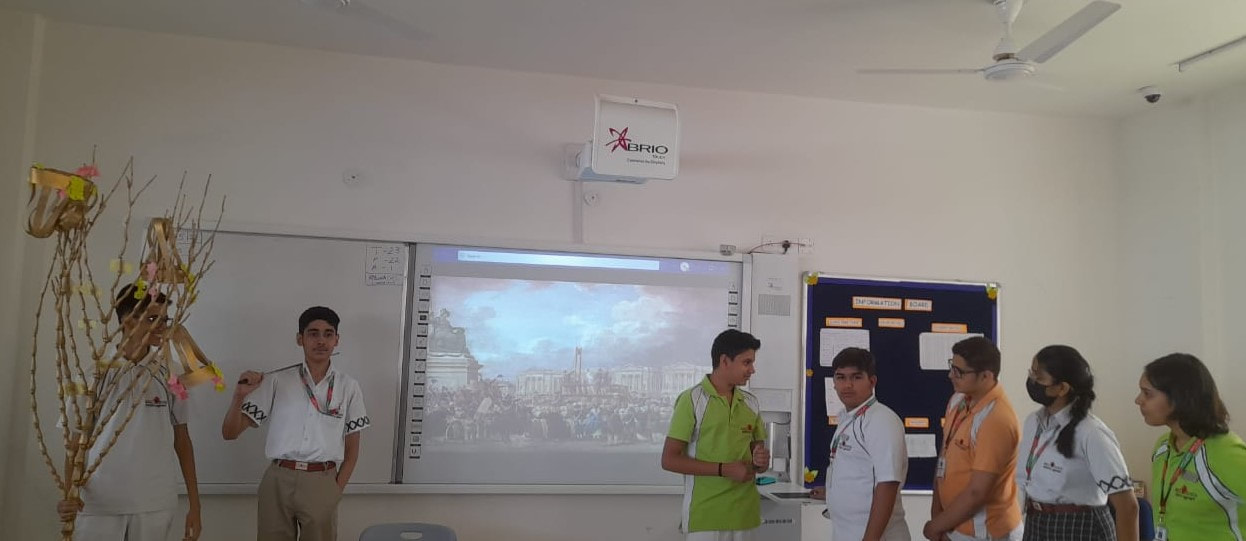
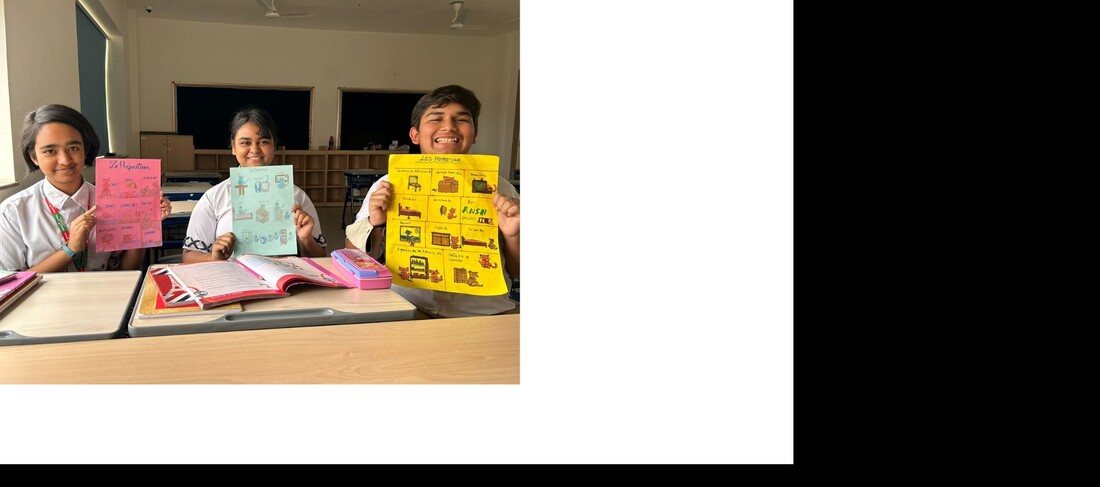
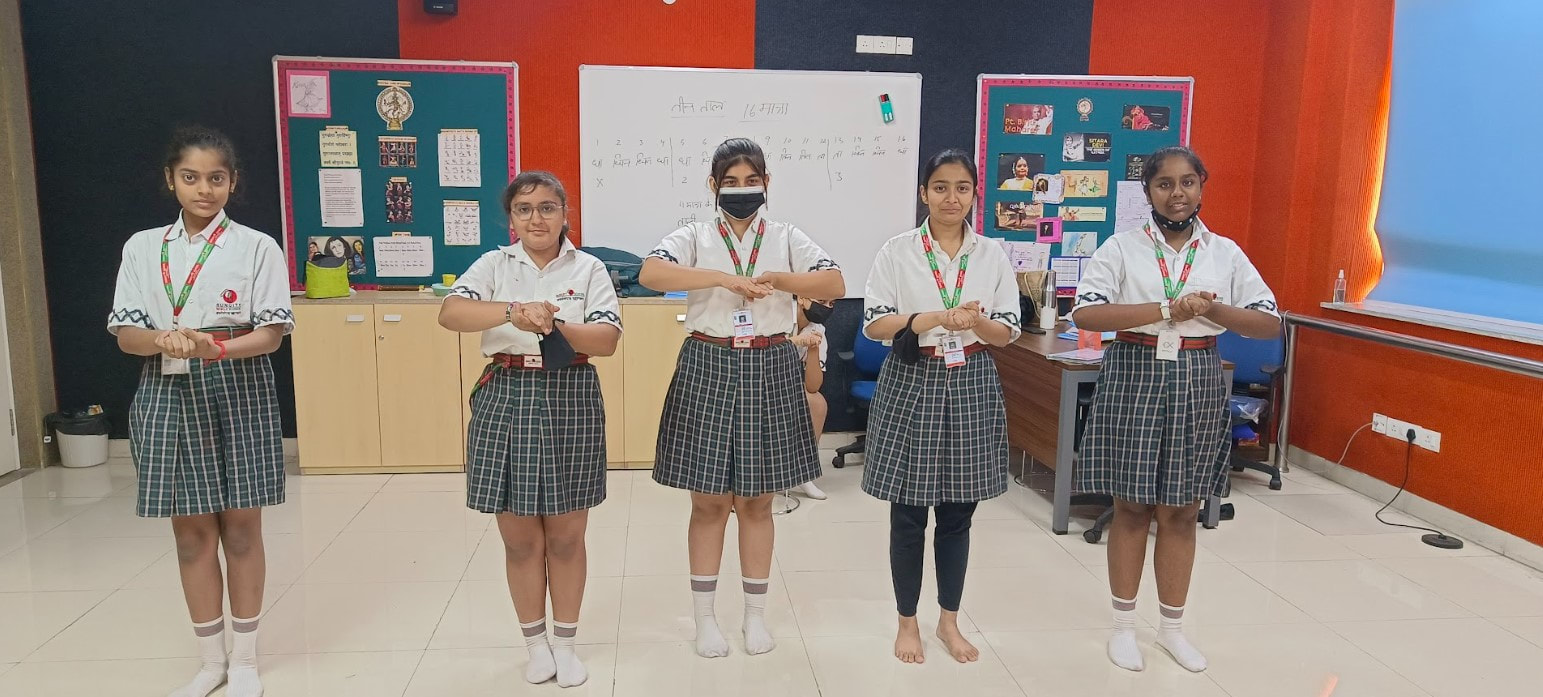
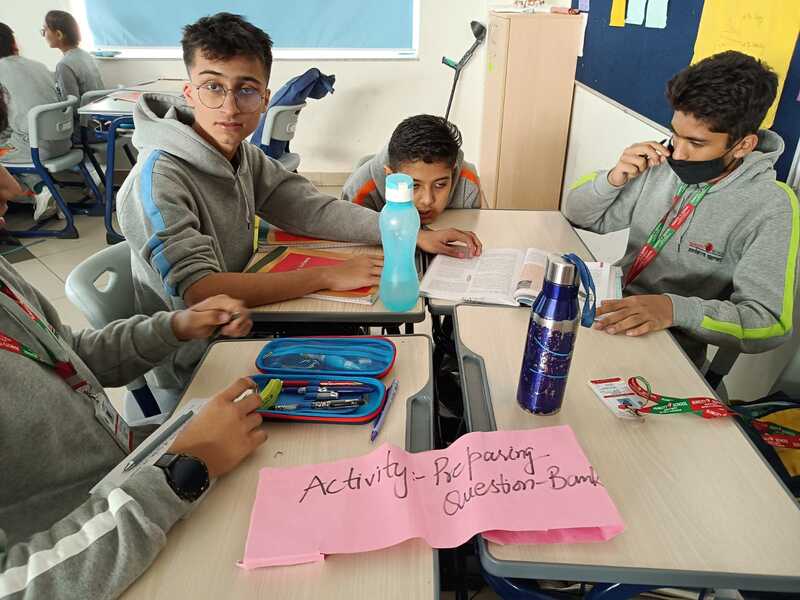
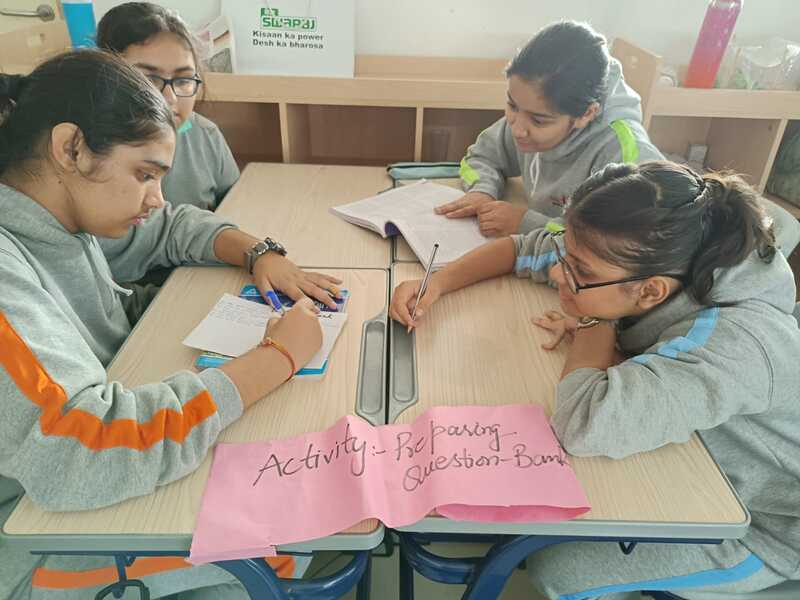
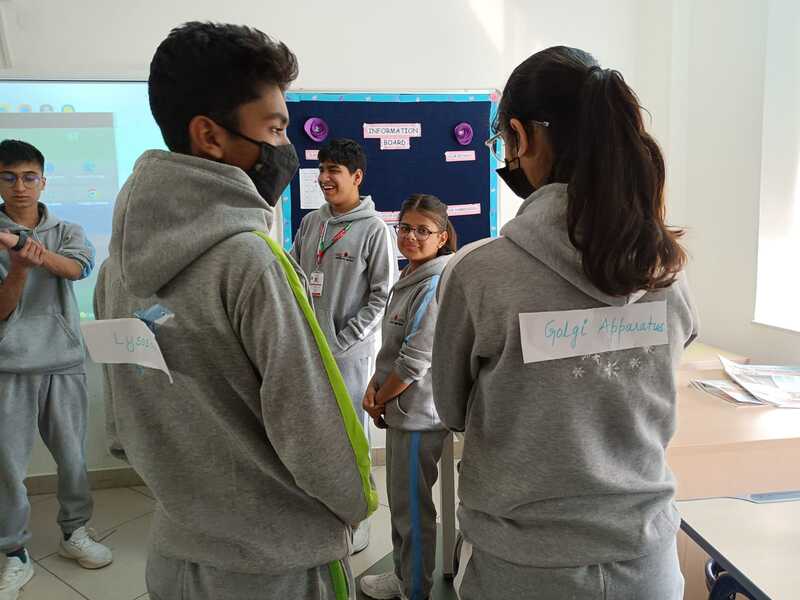
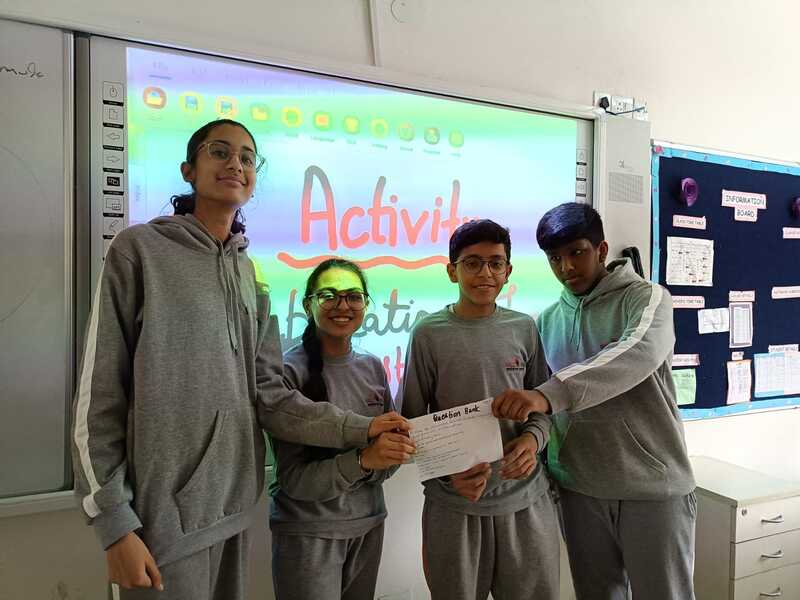
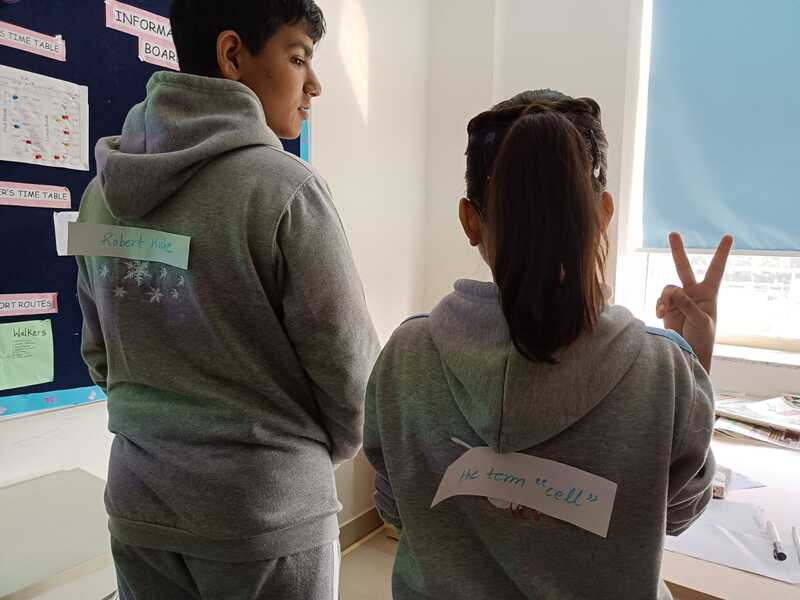
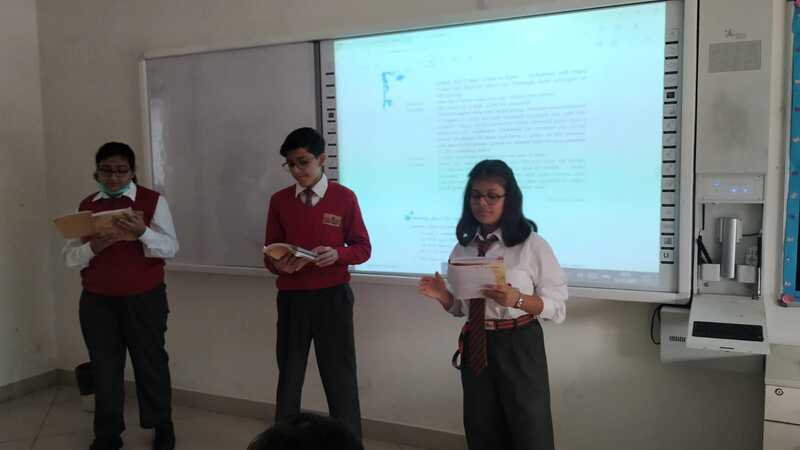
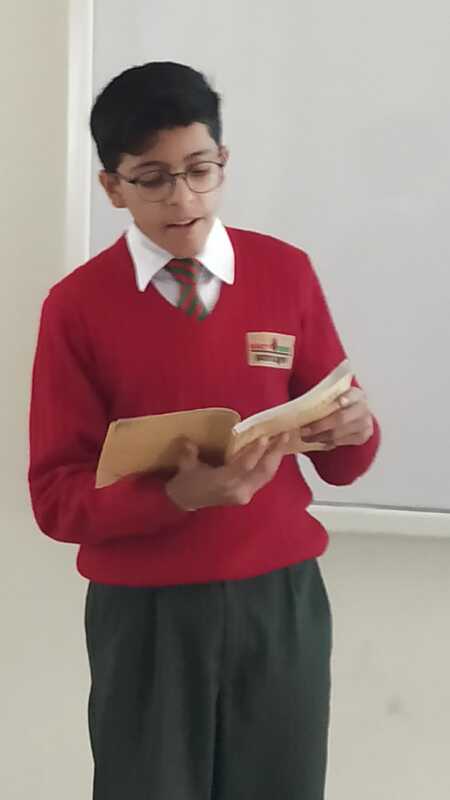
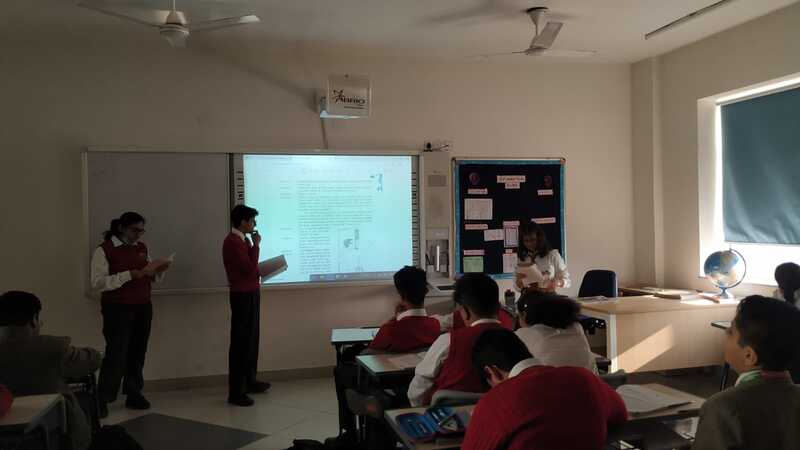
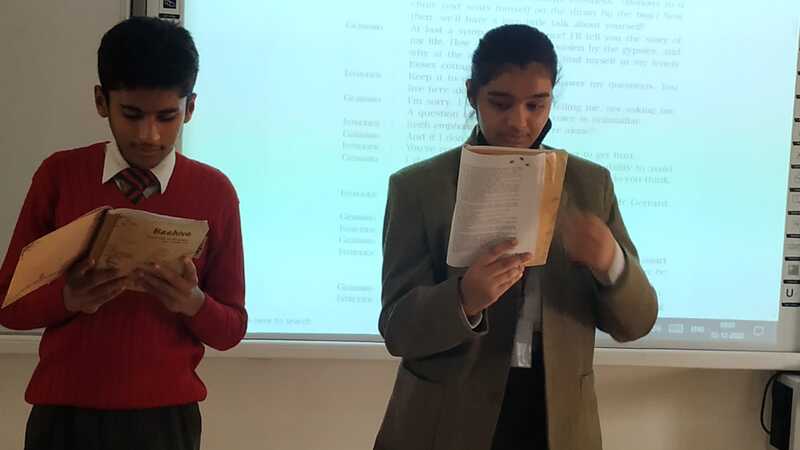

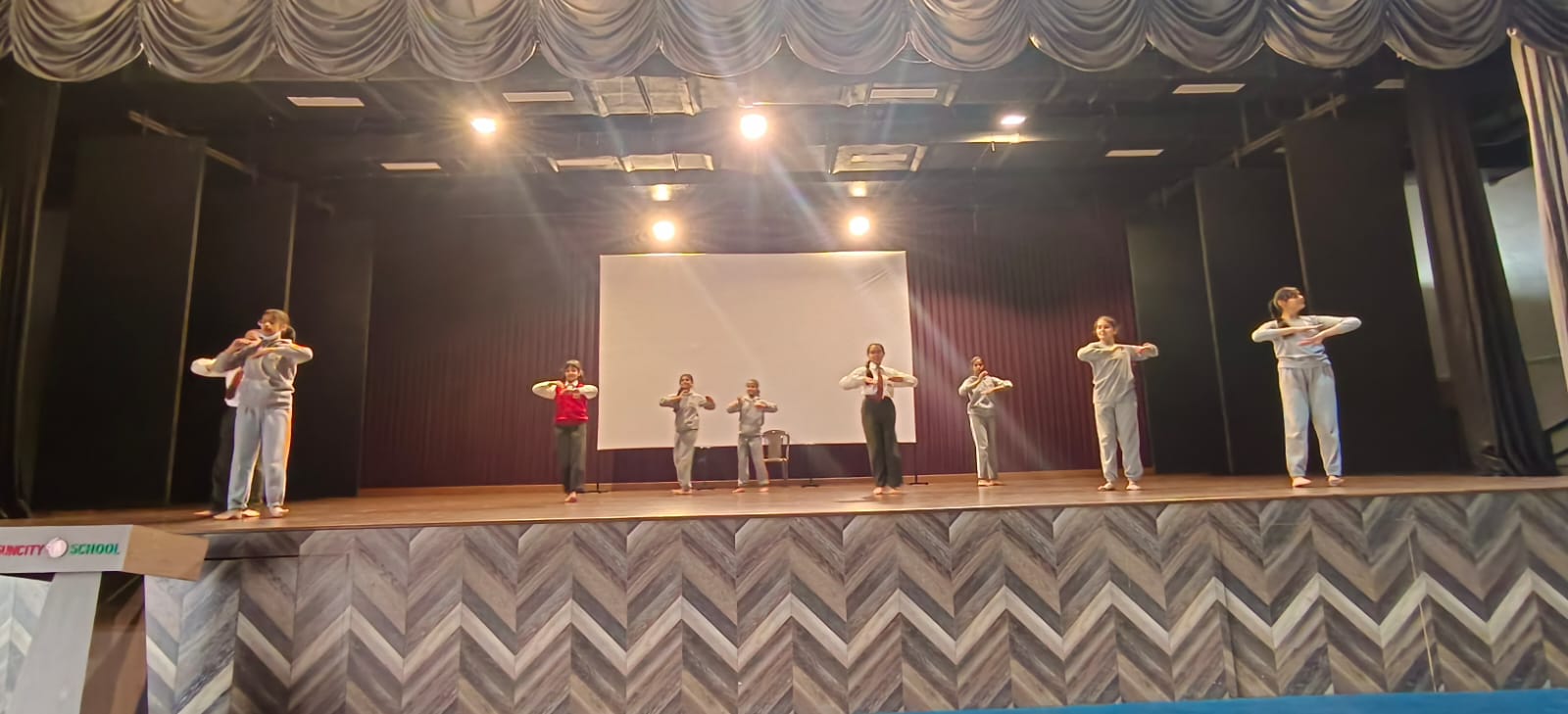
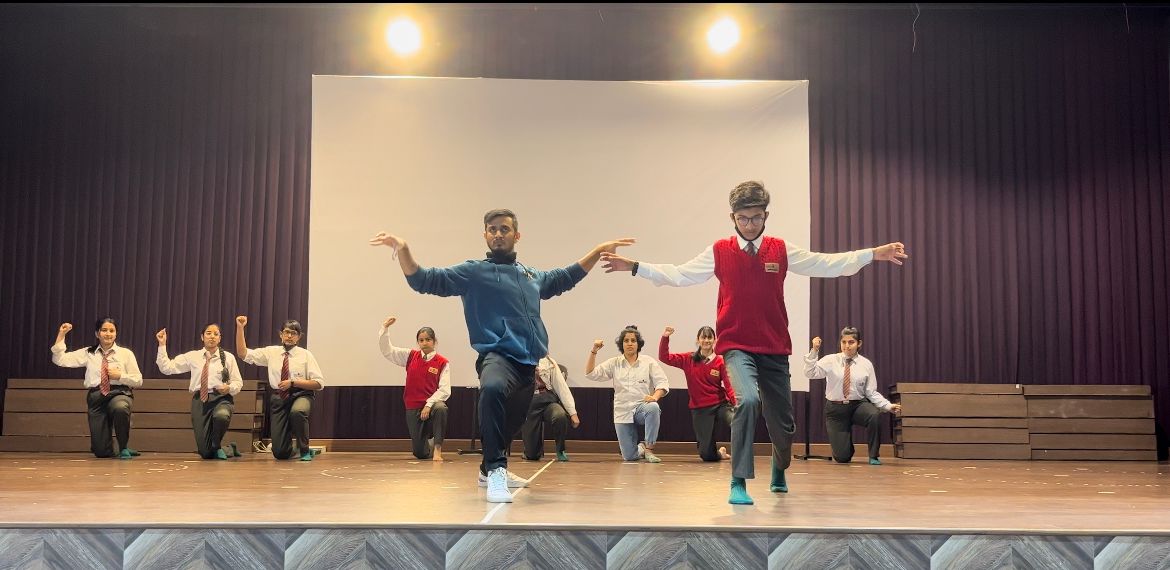
 RSS Feed
RSS Feed
